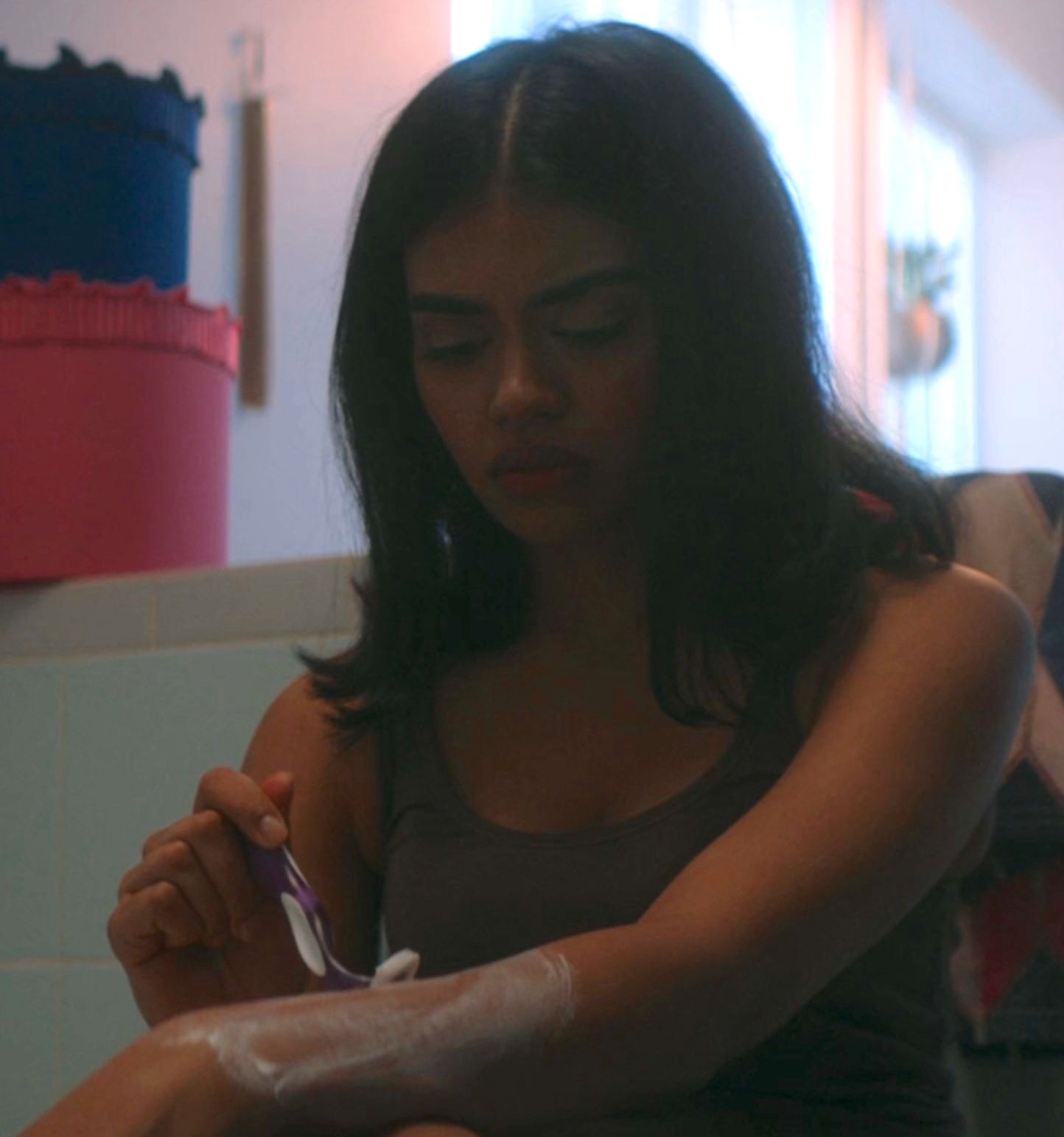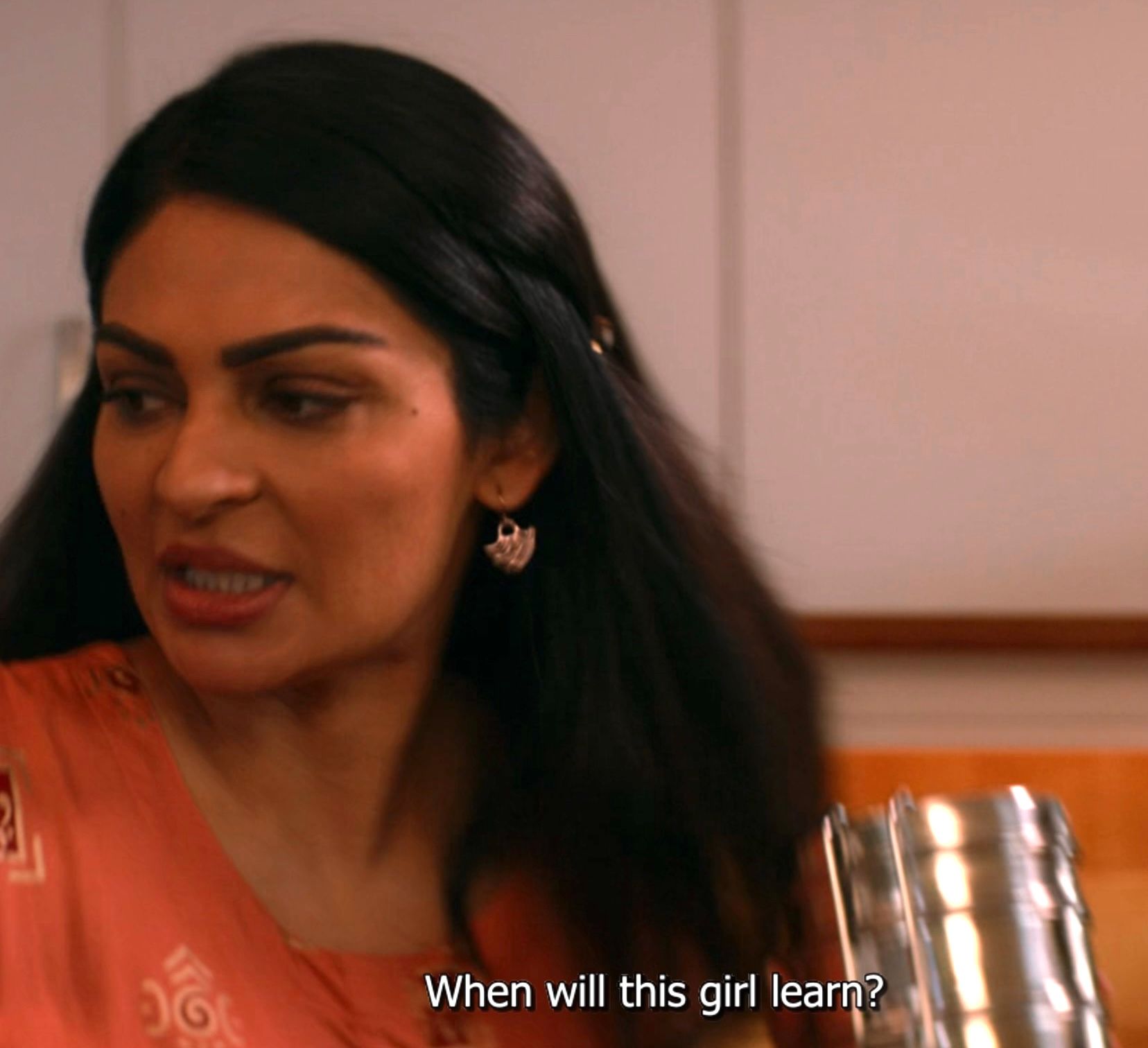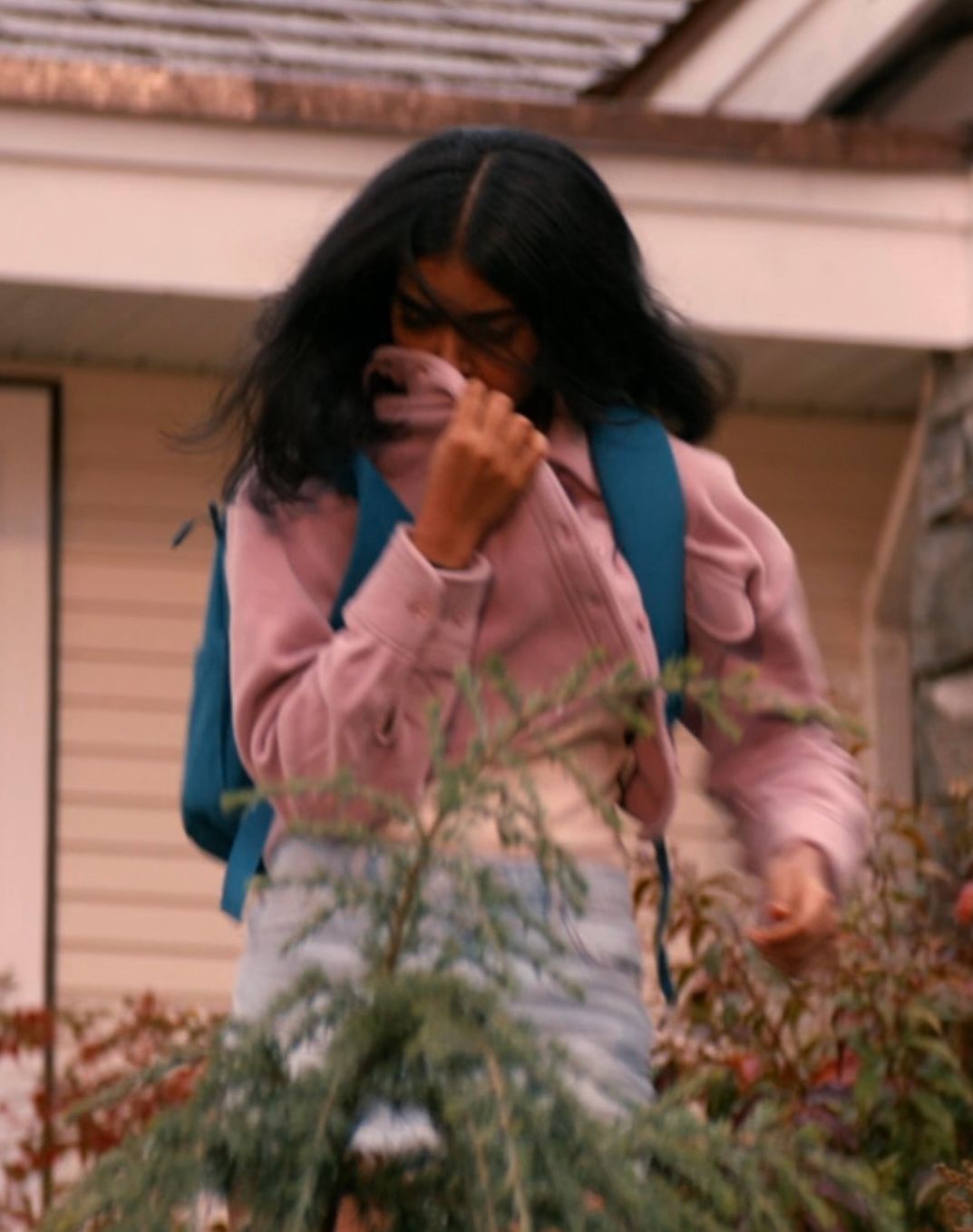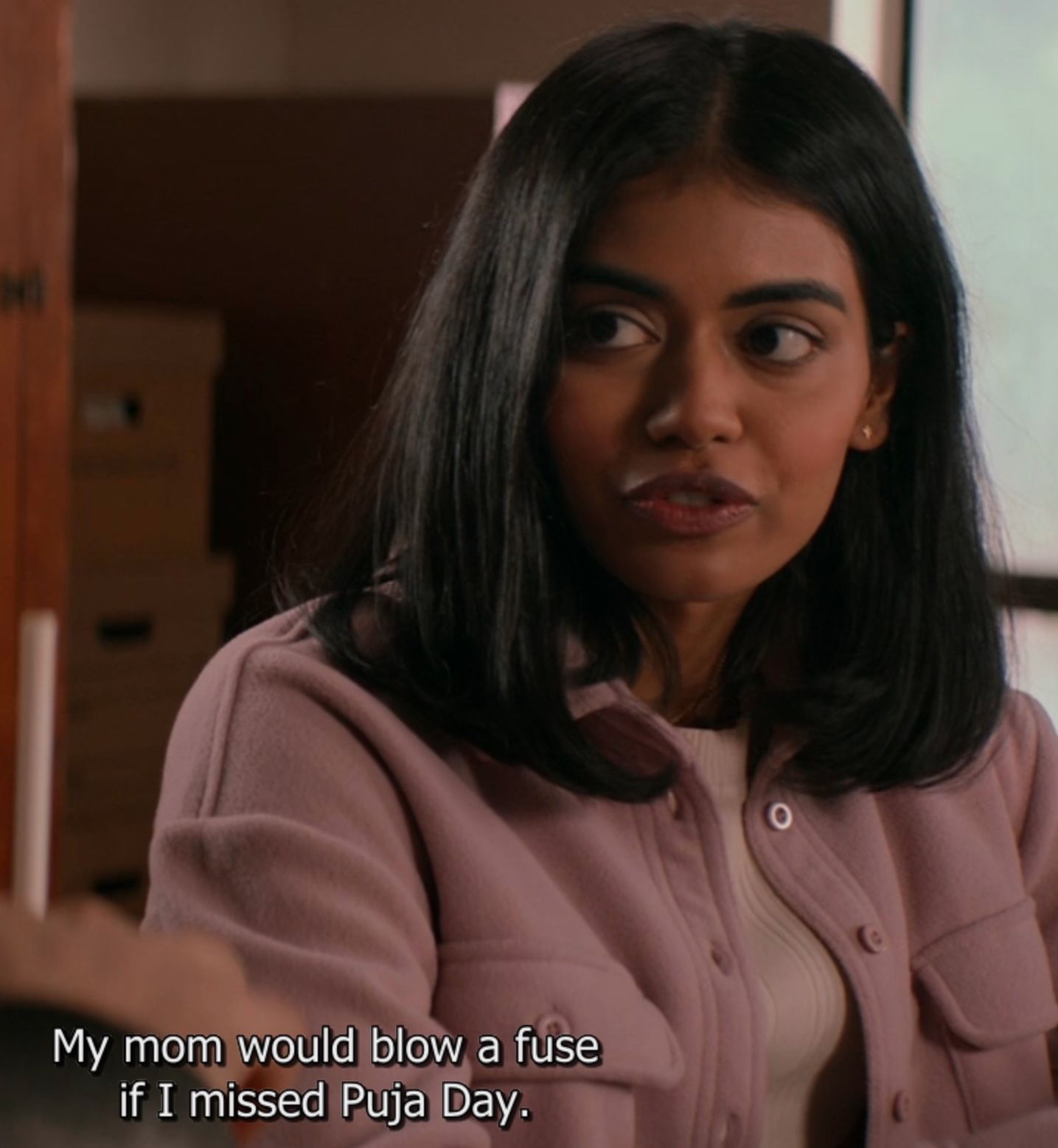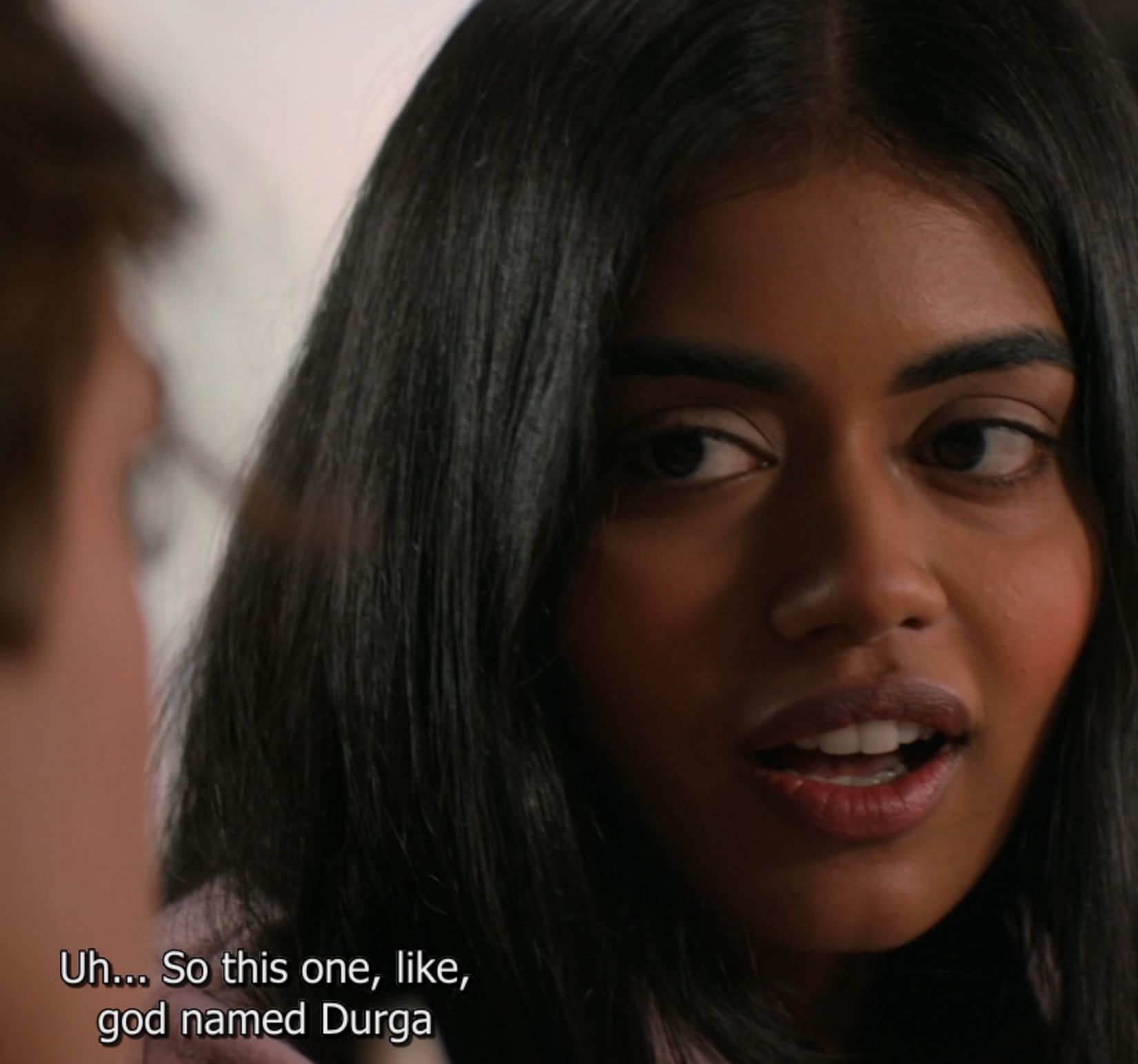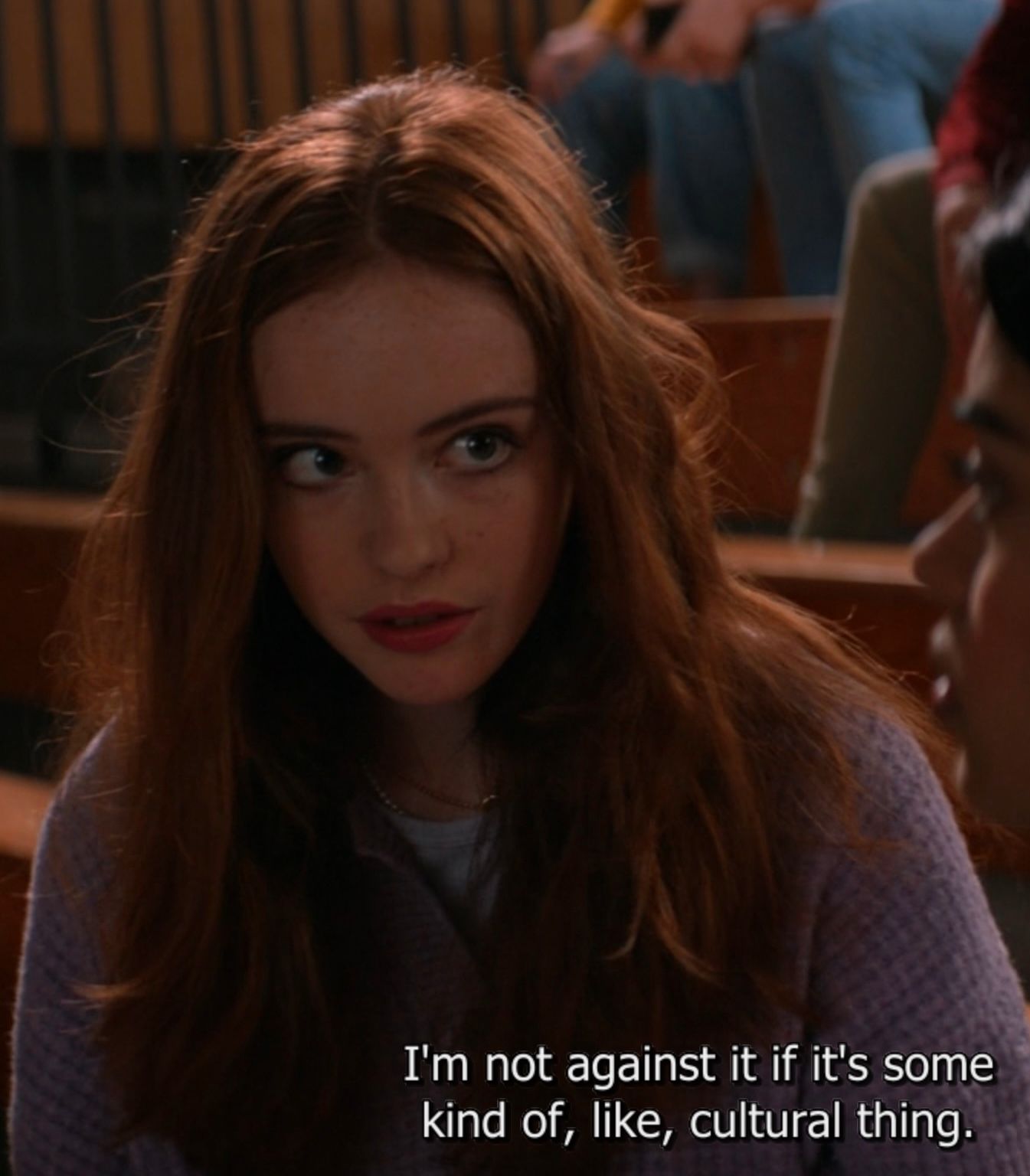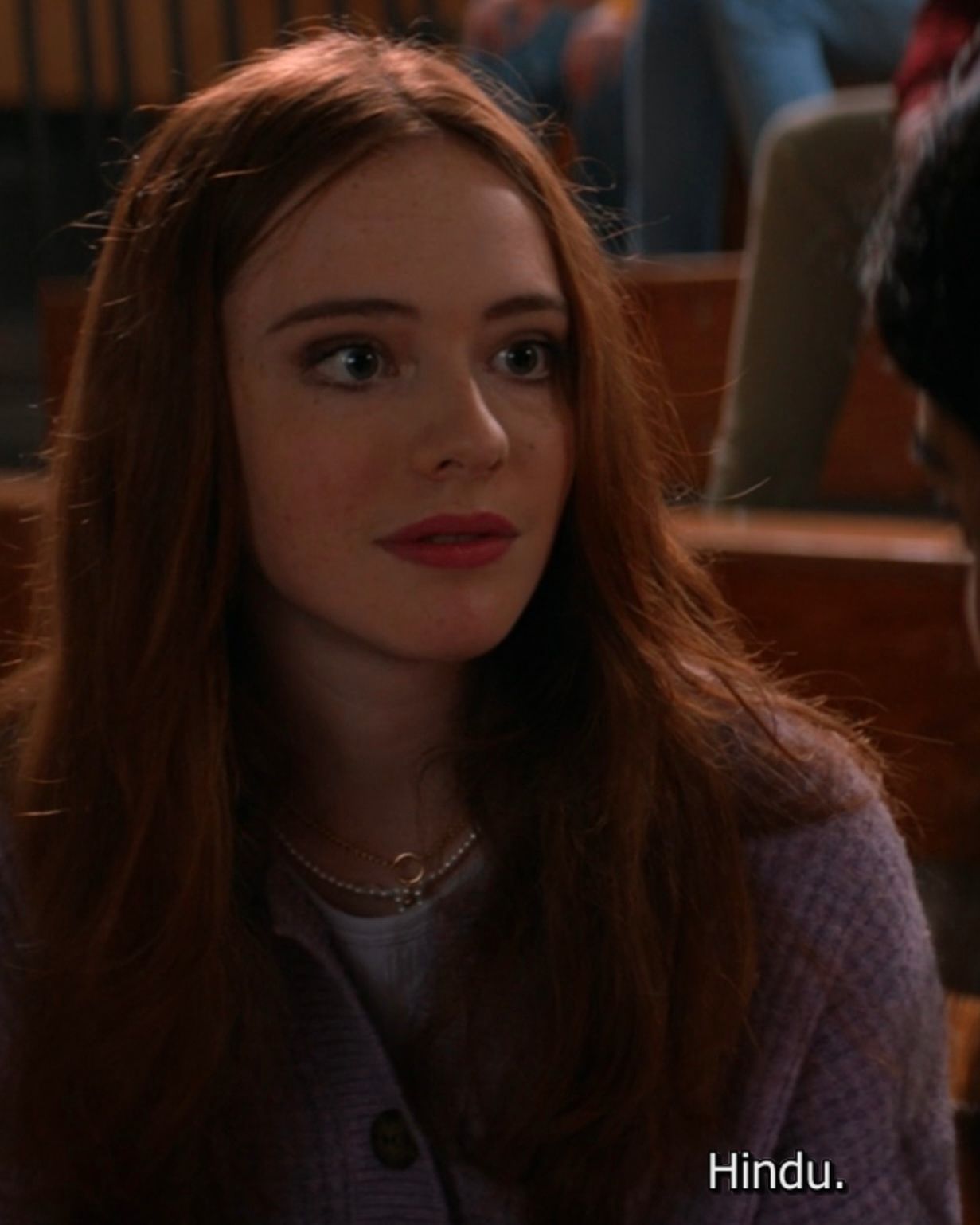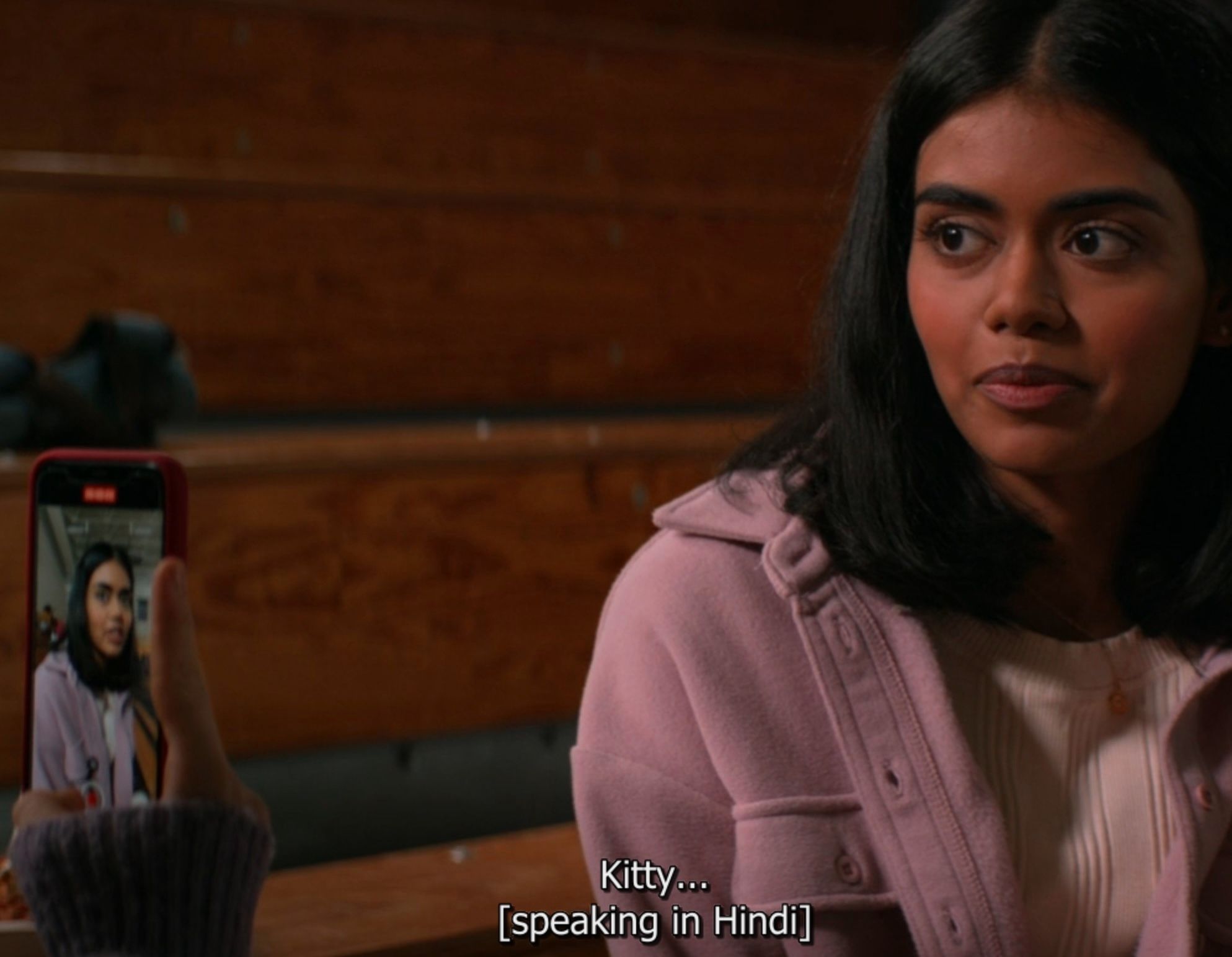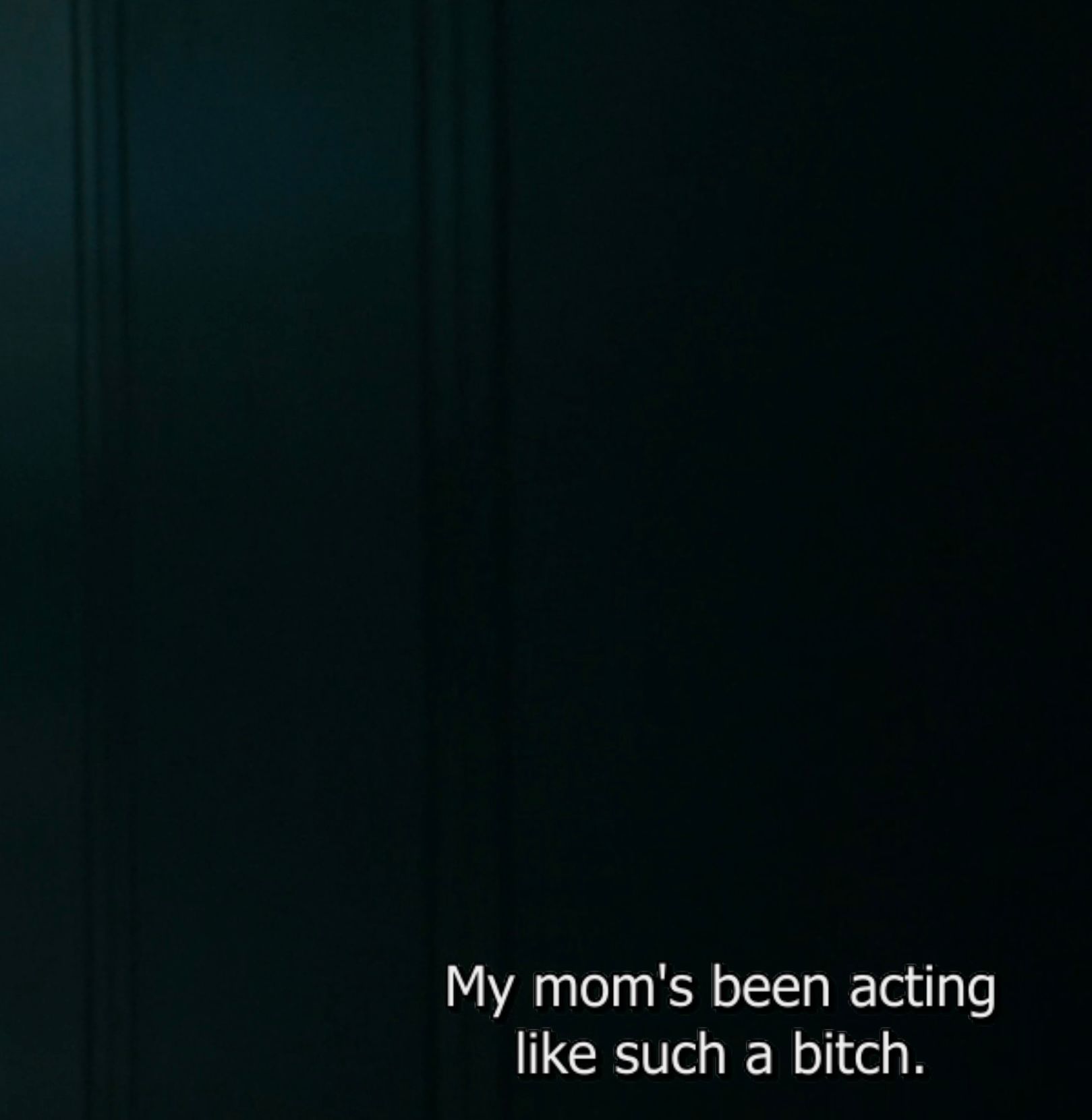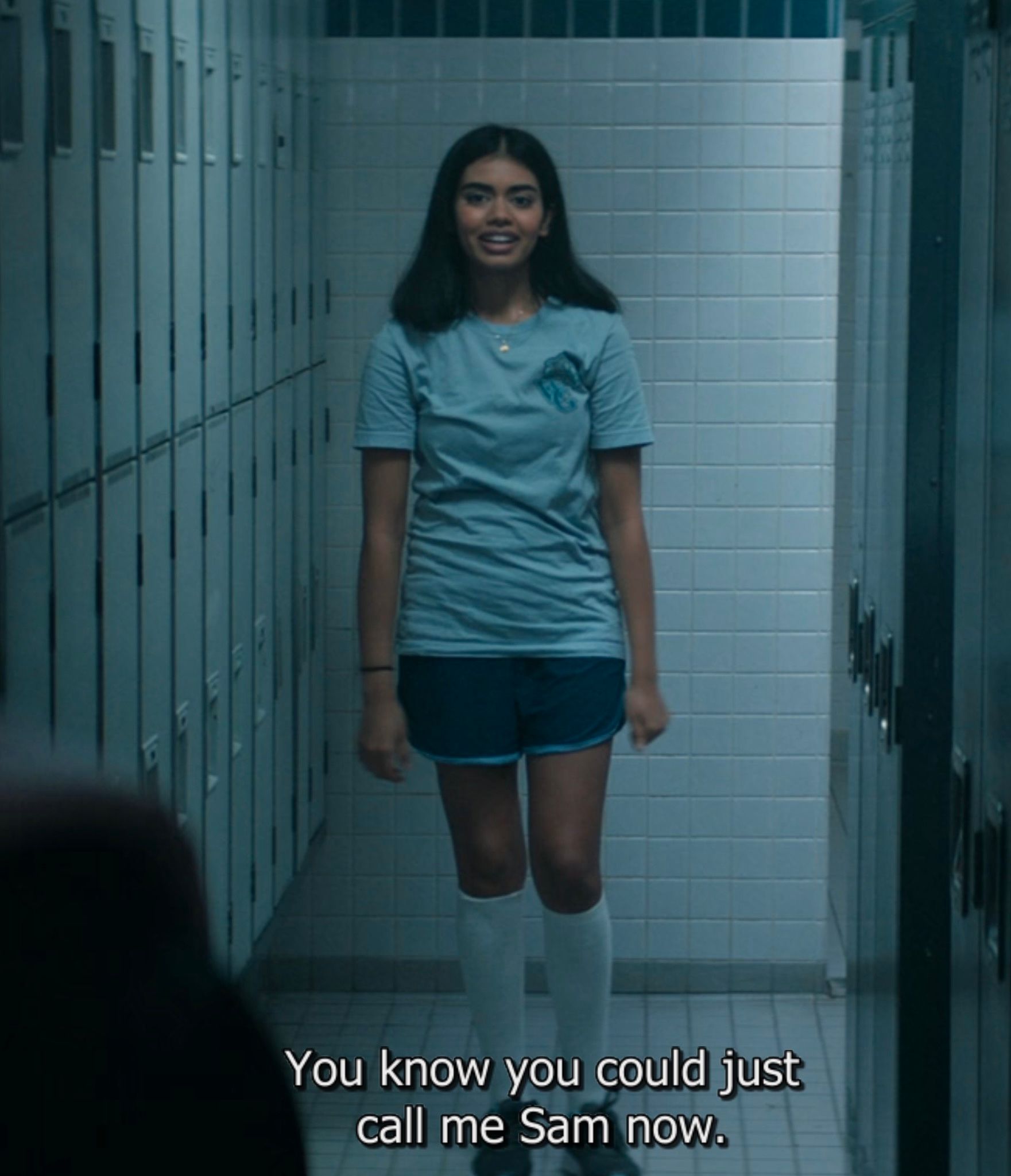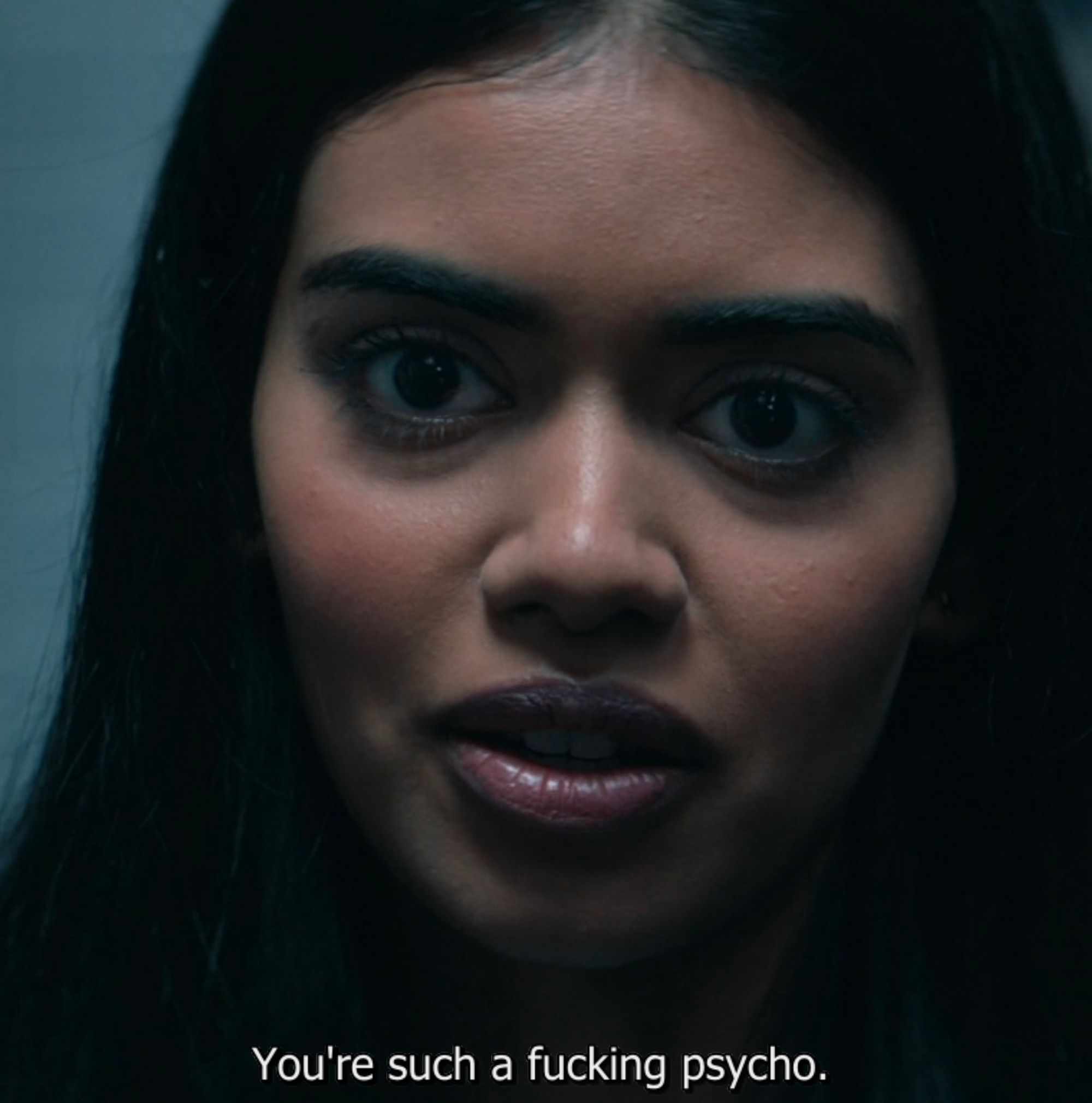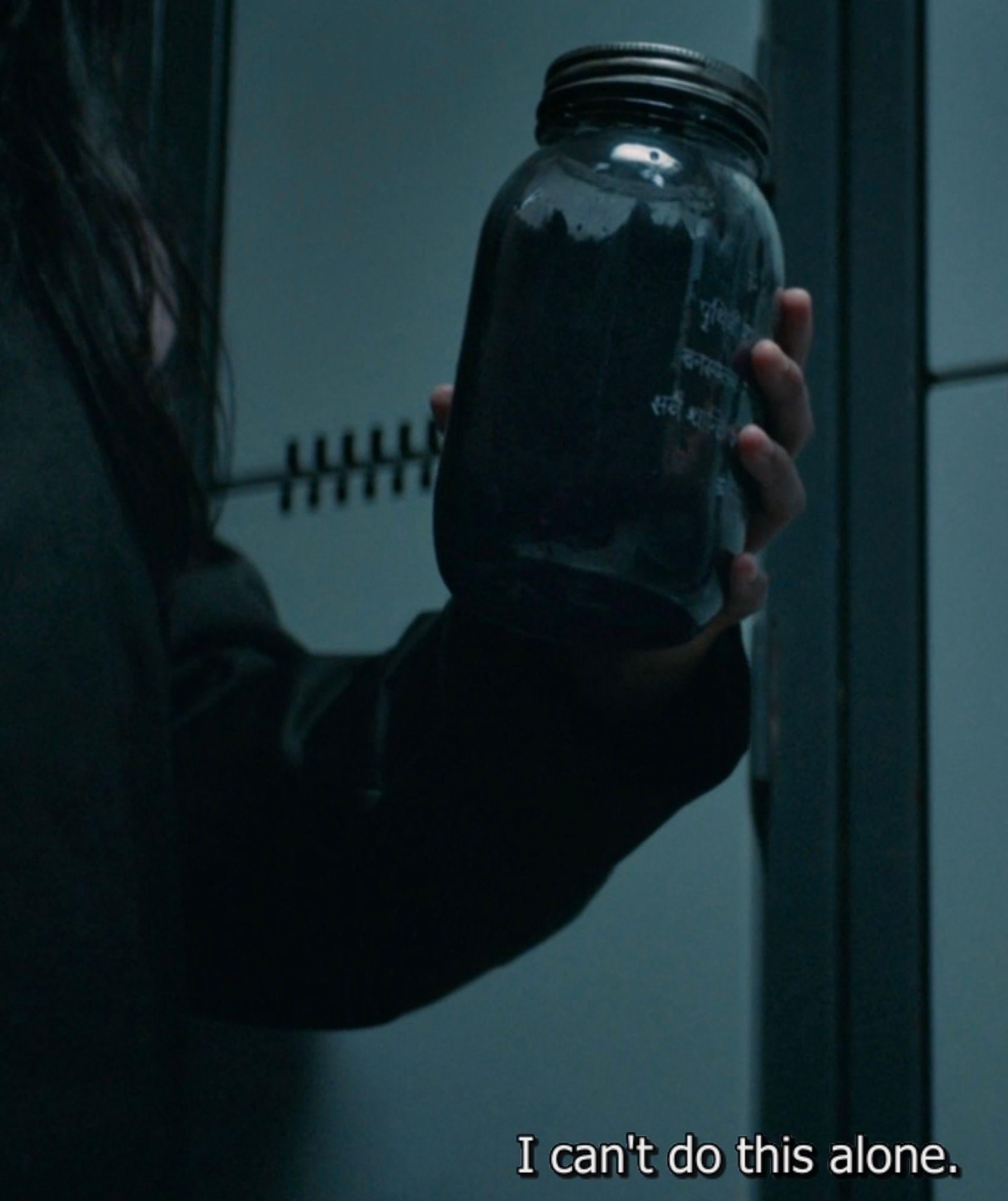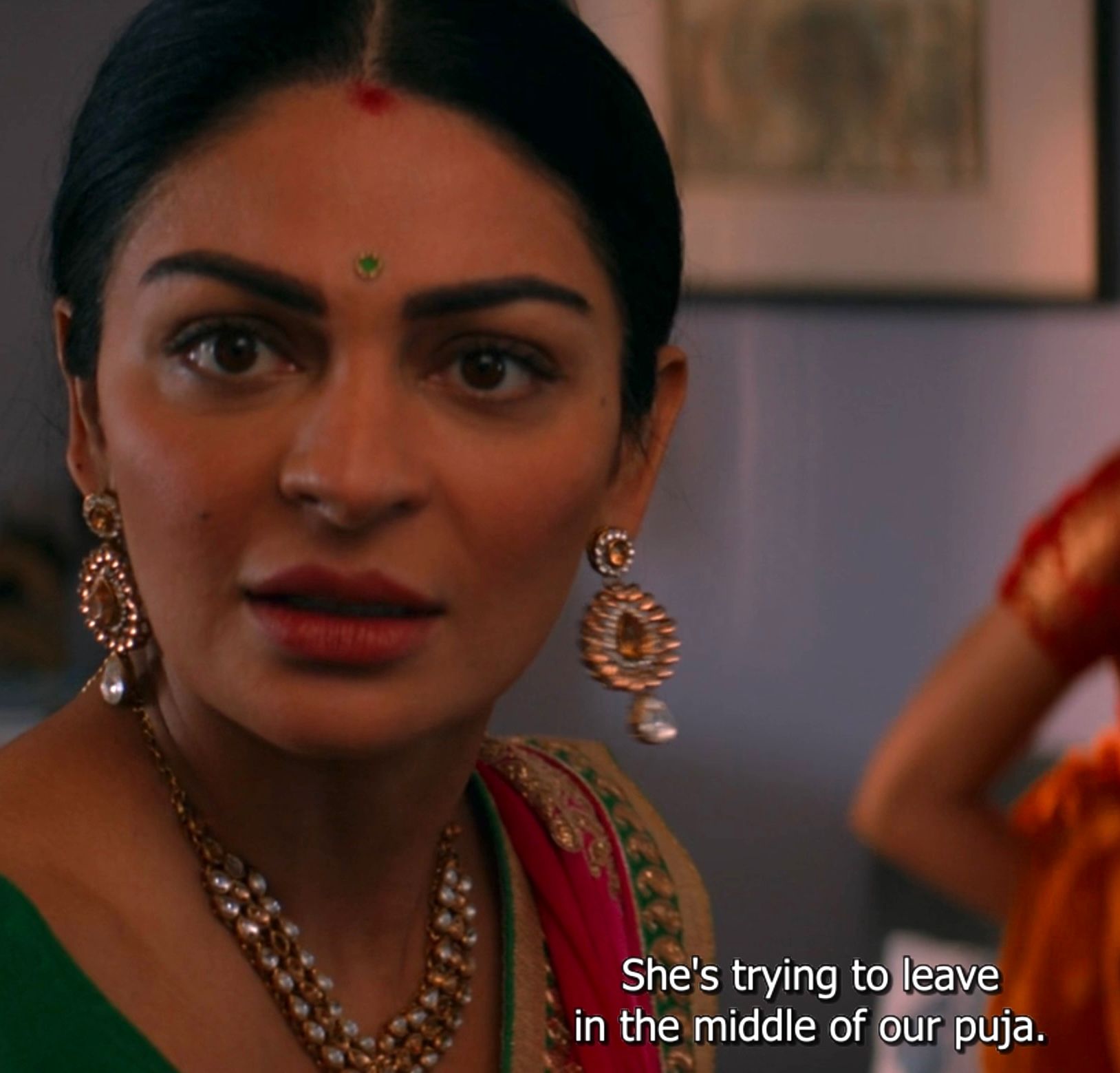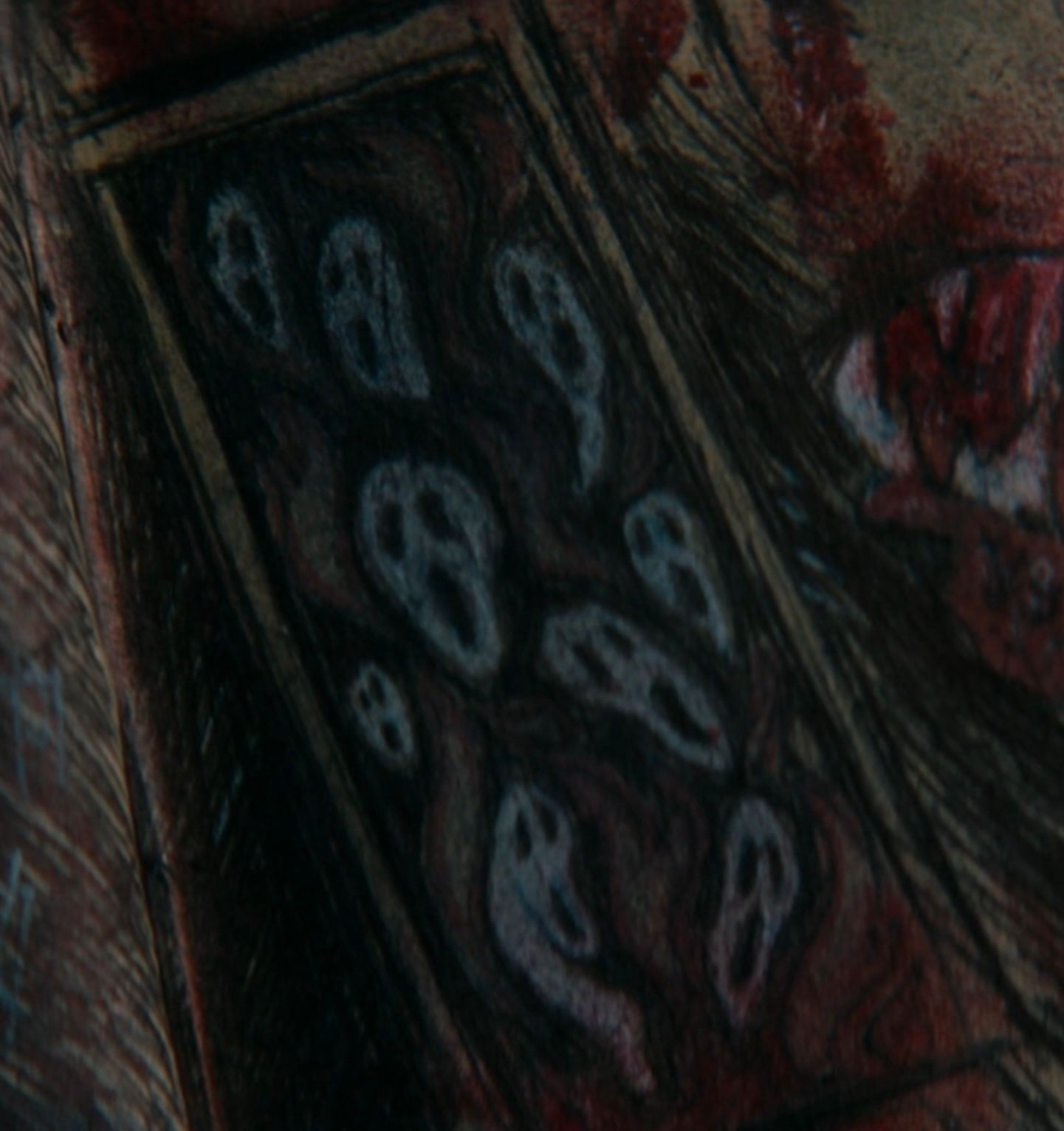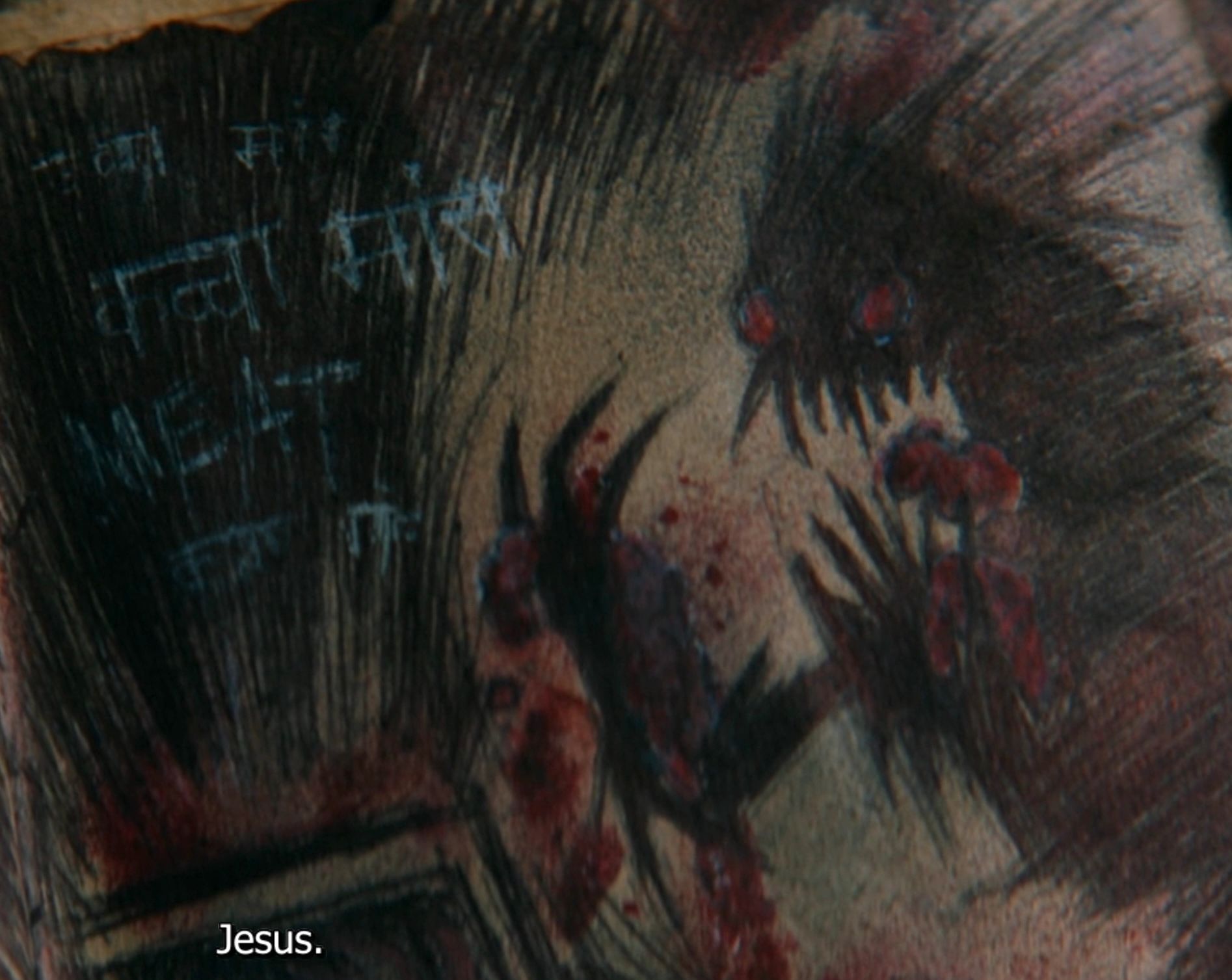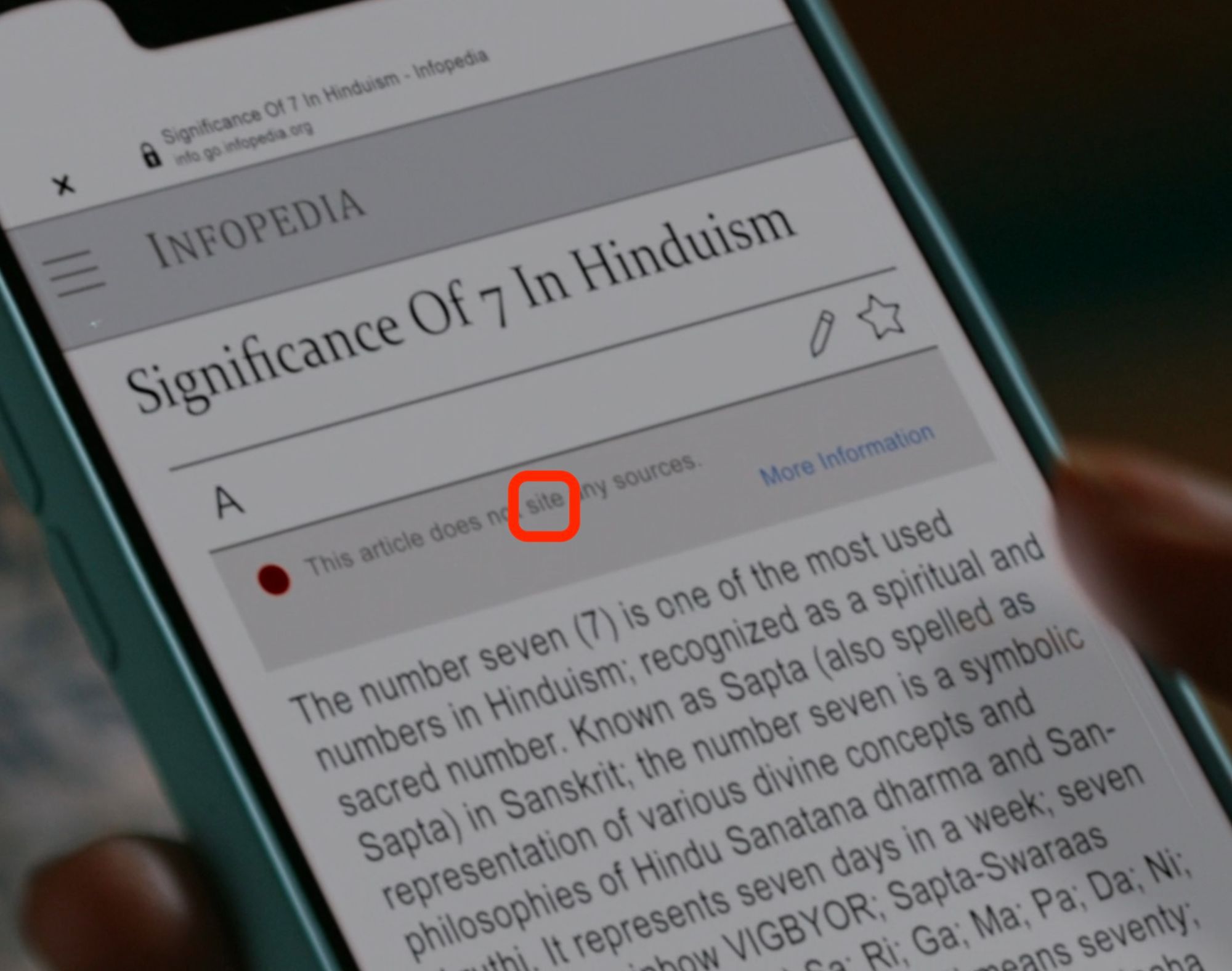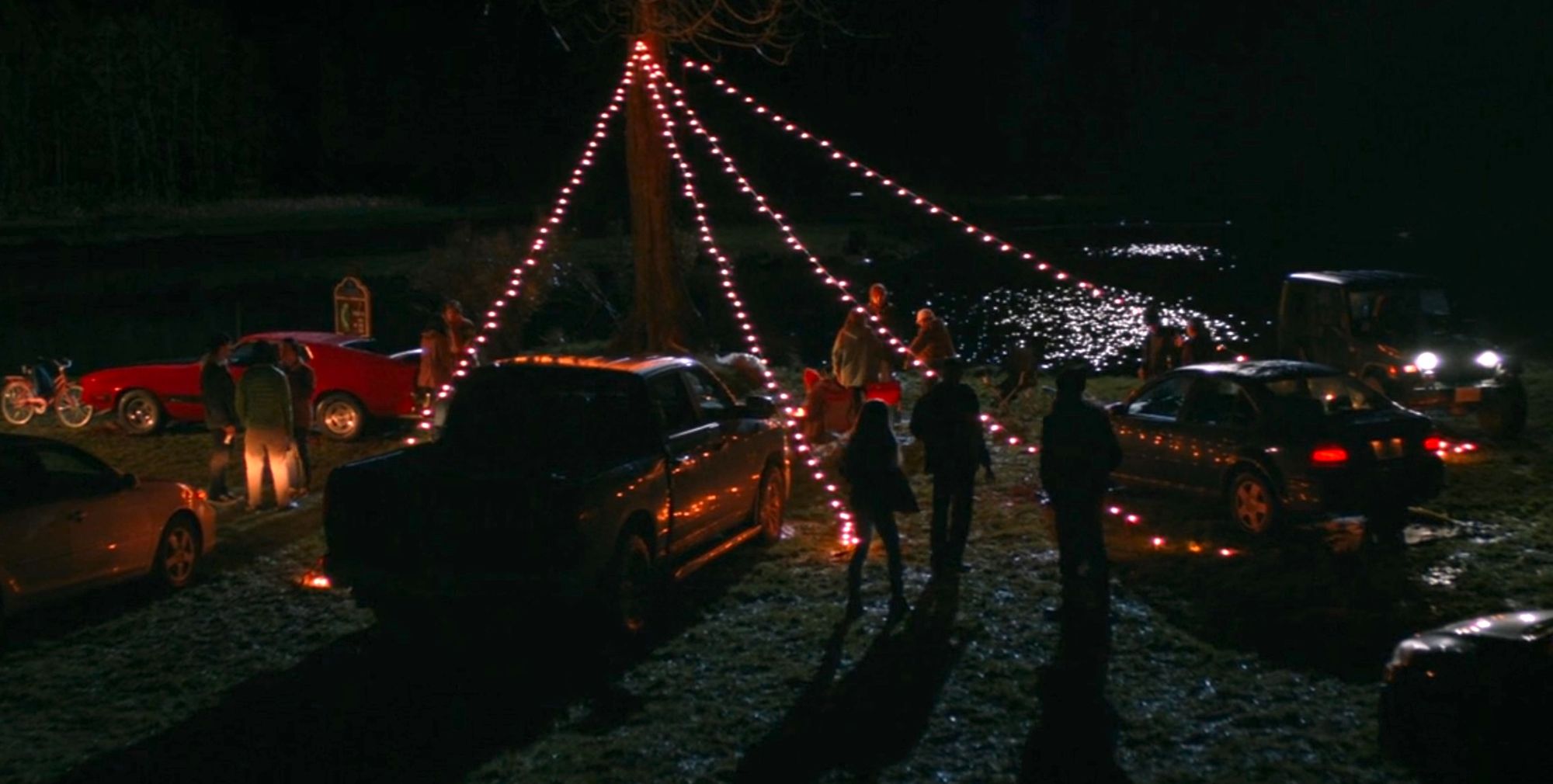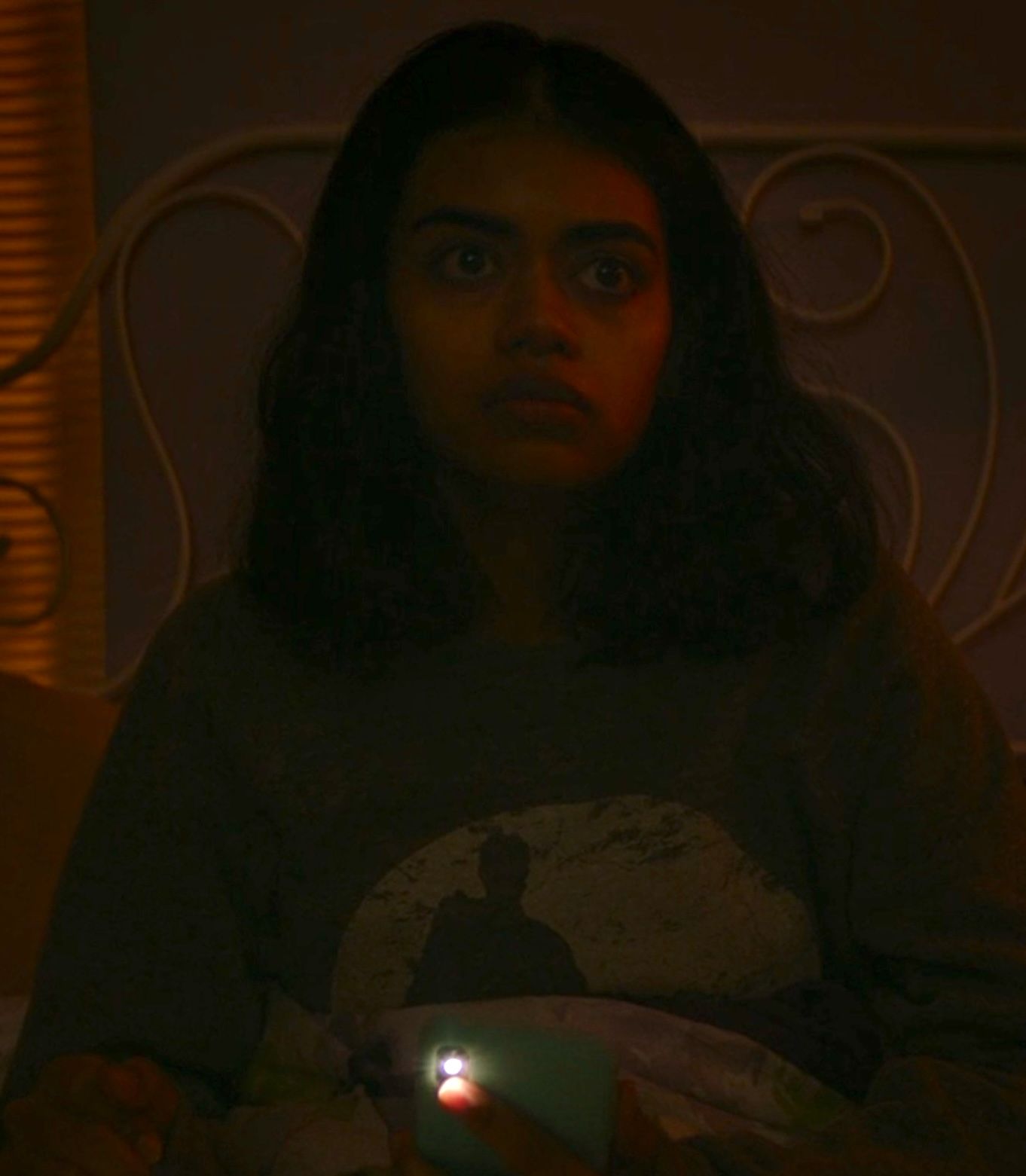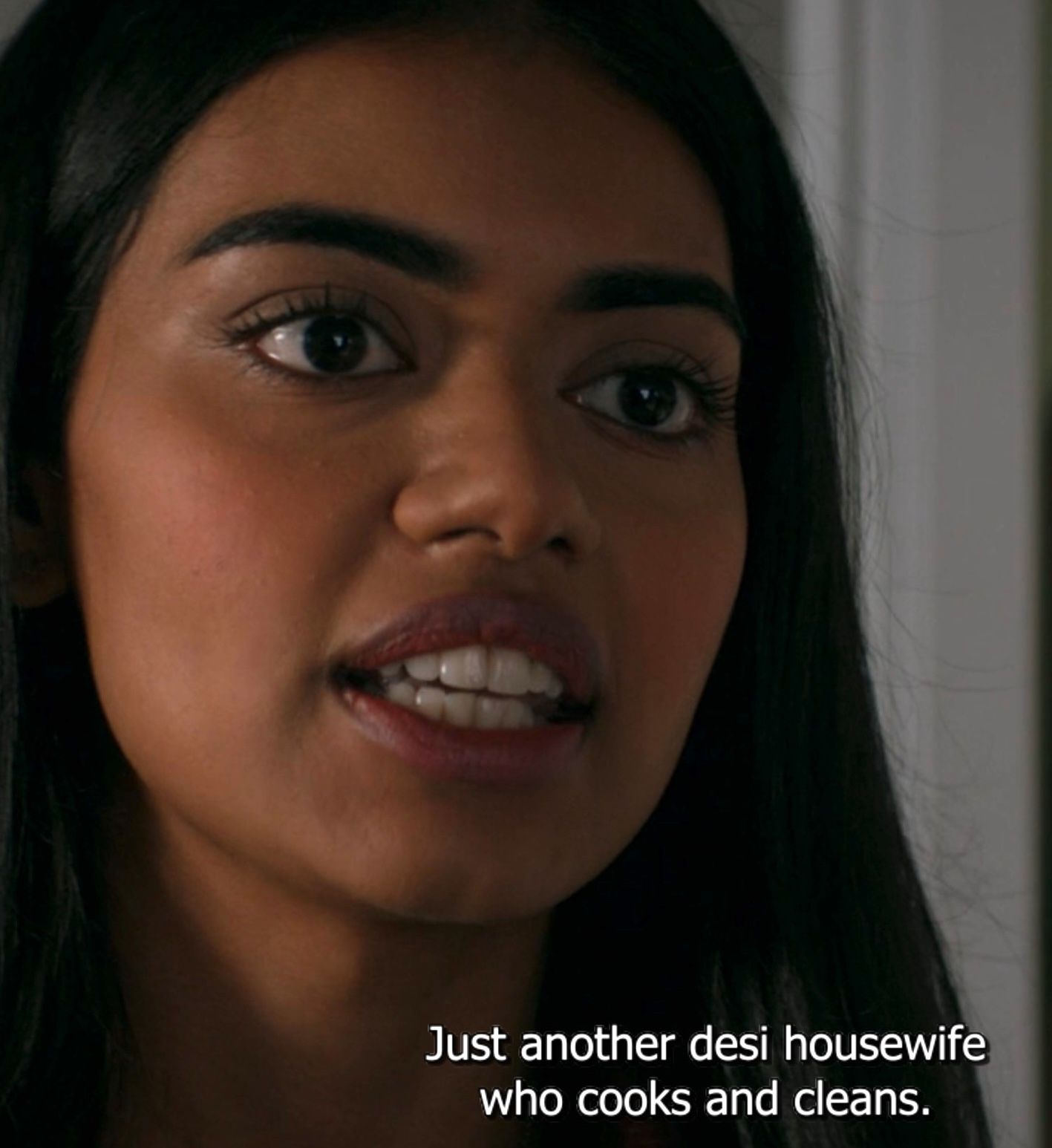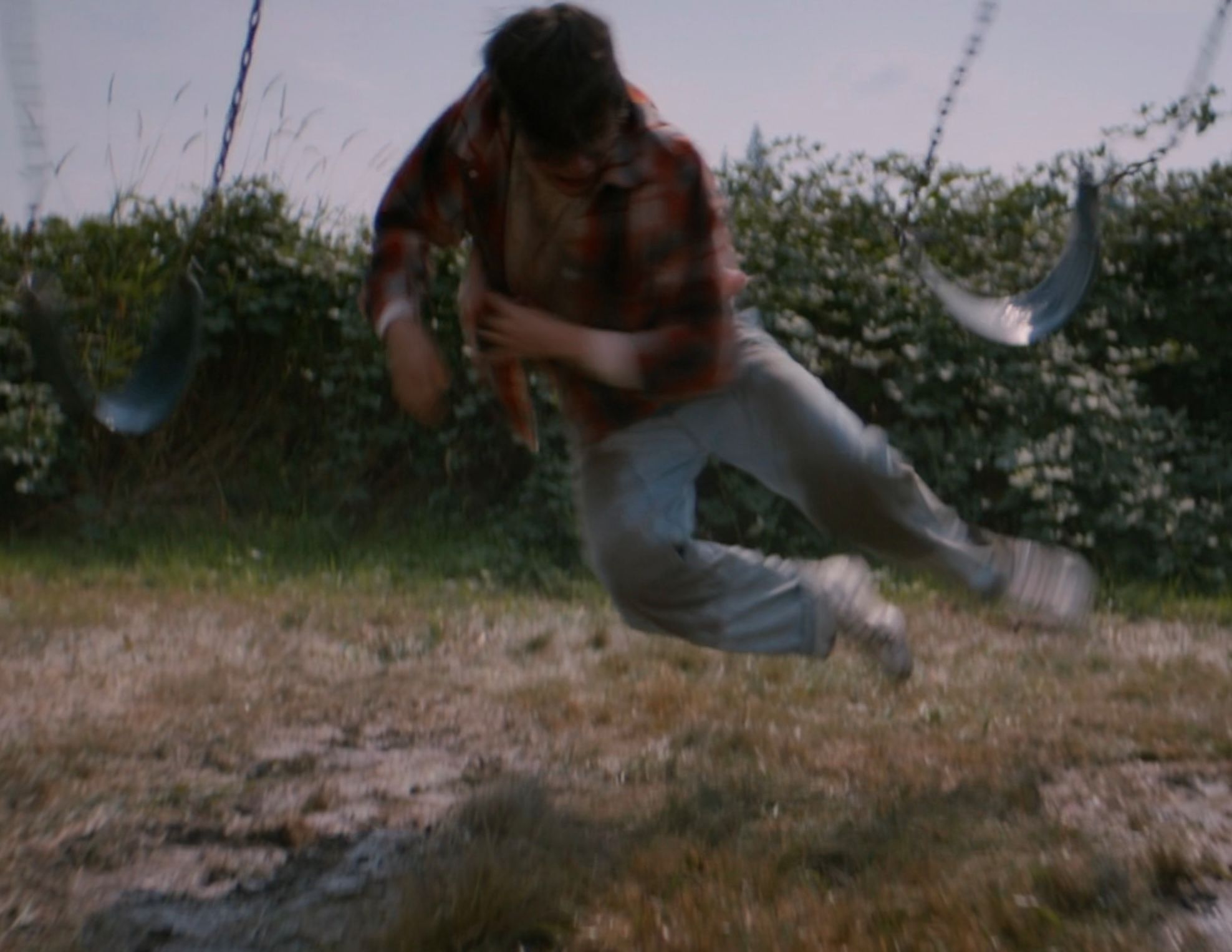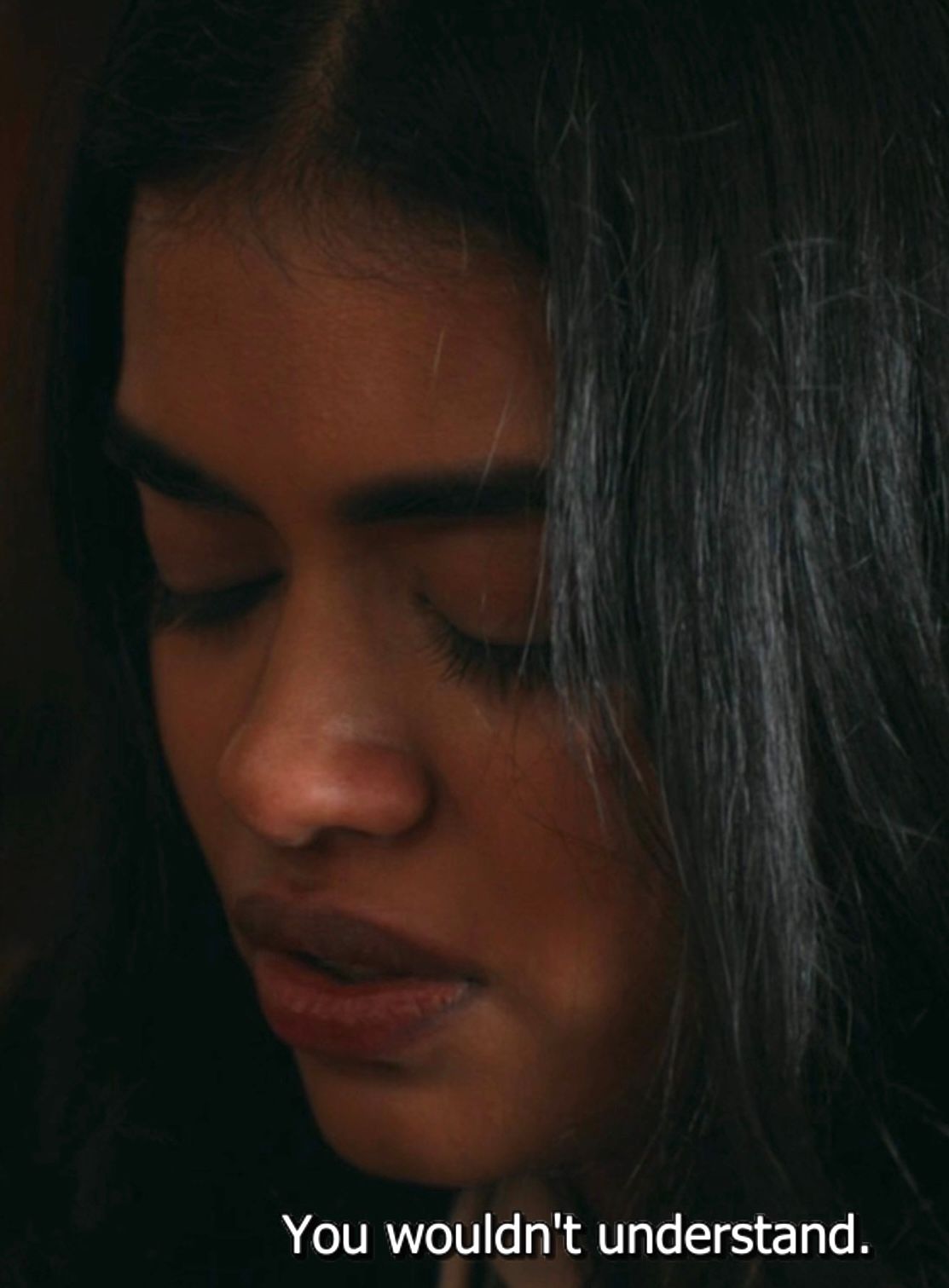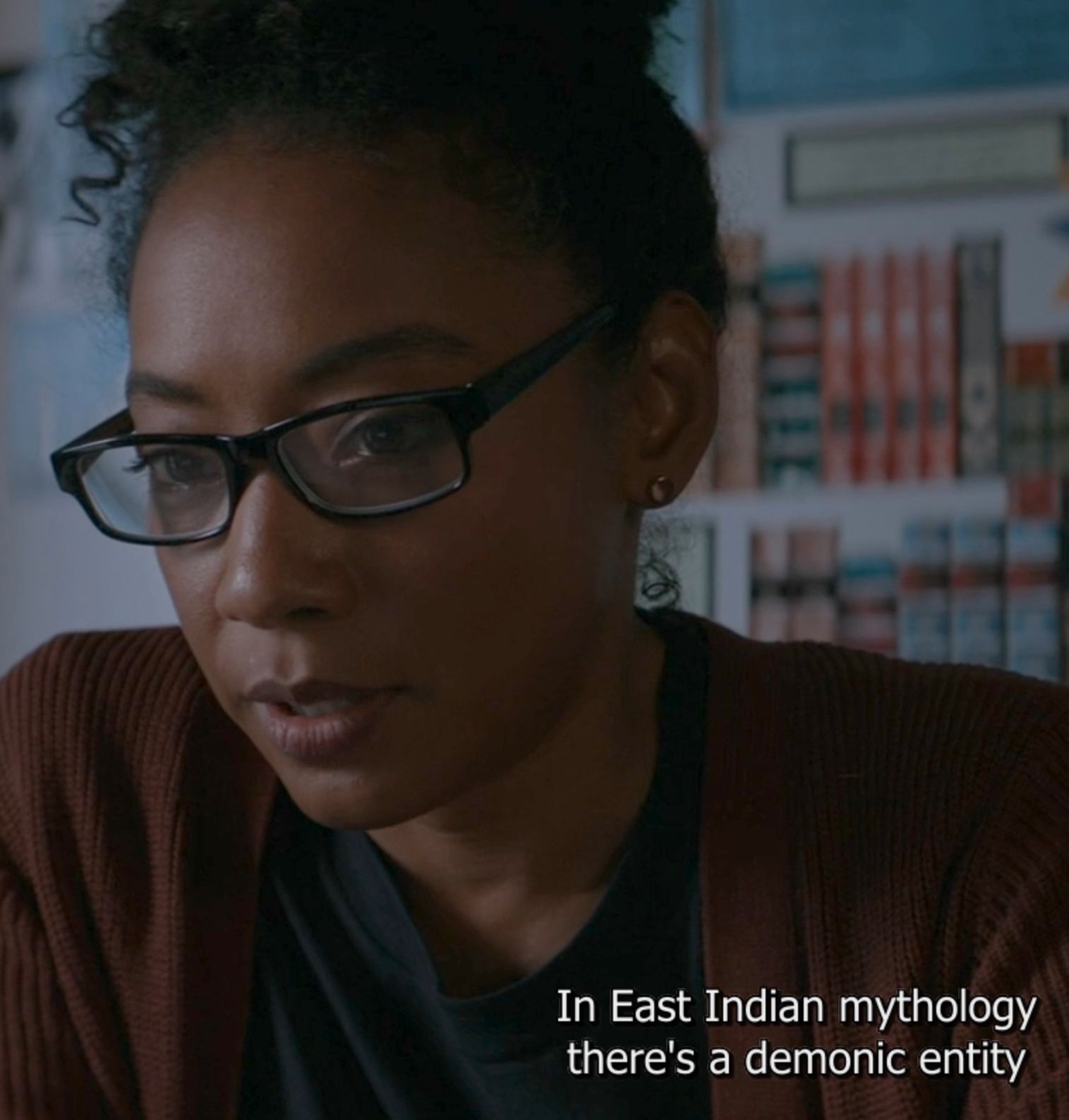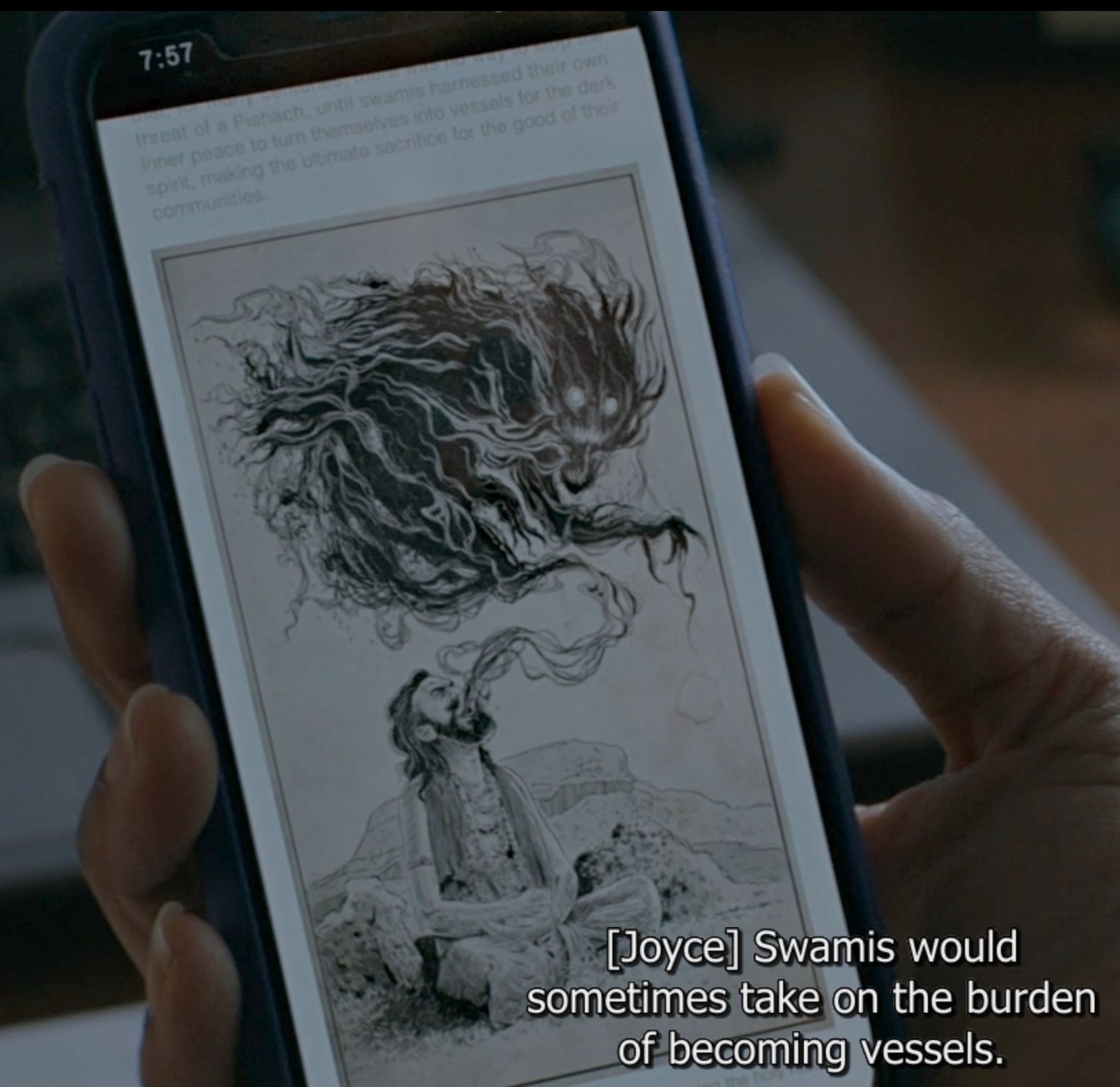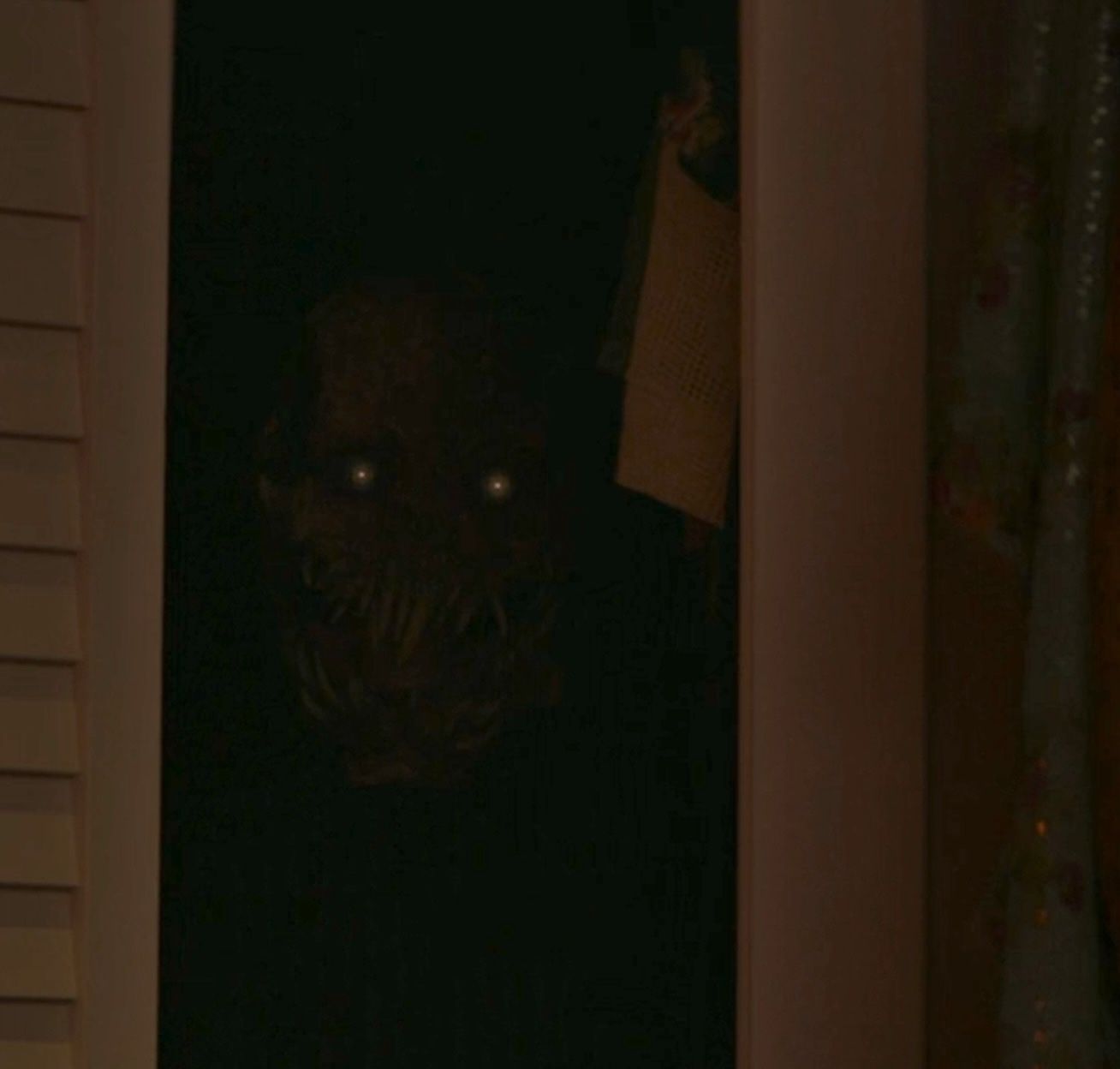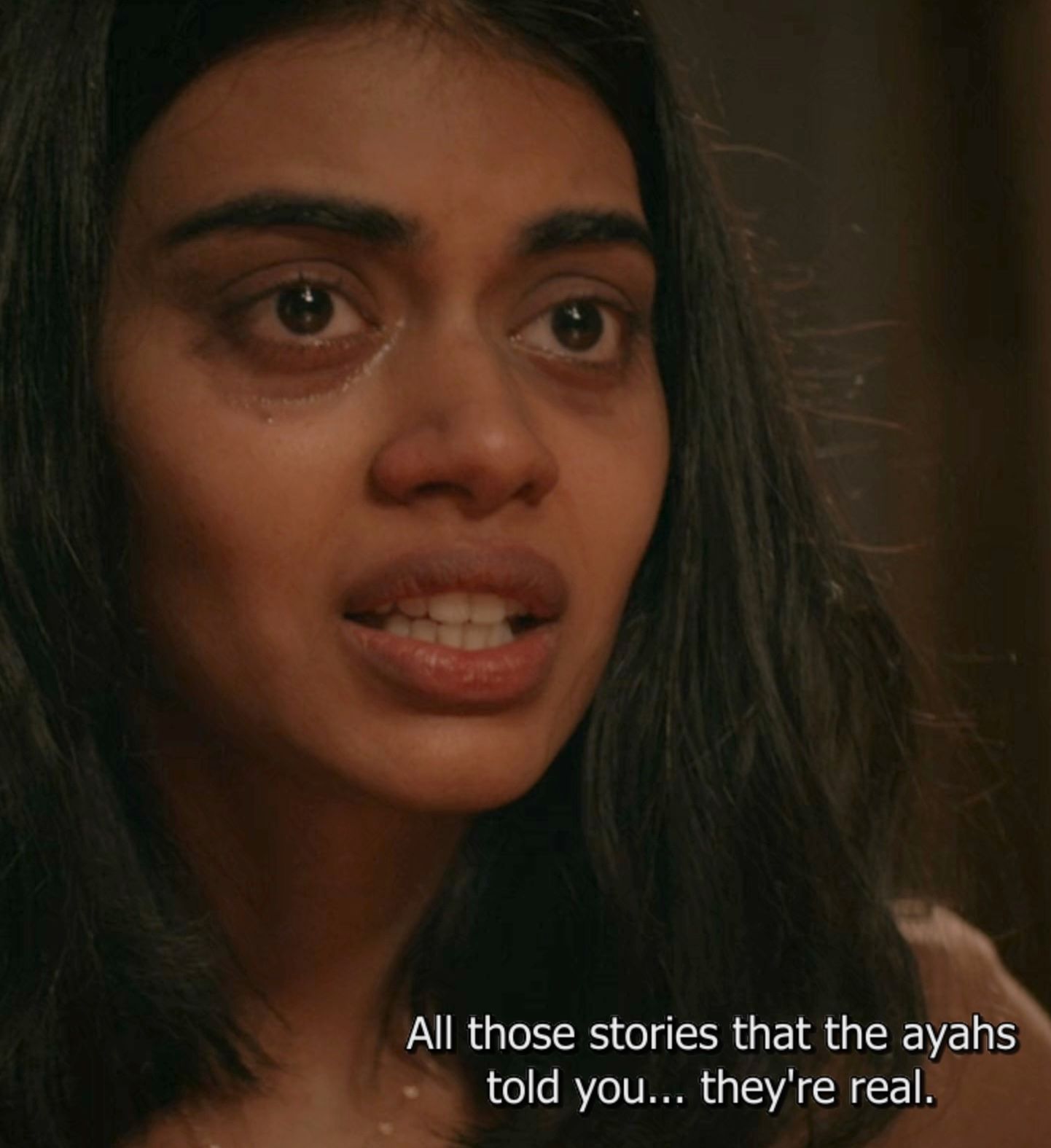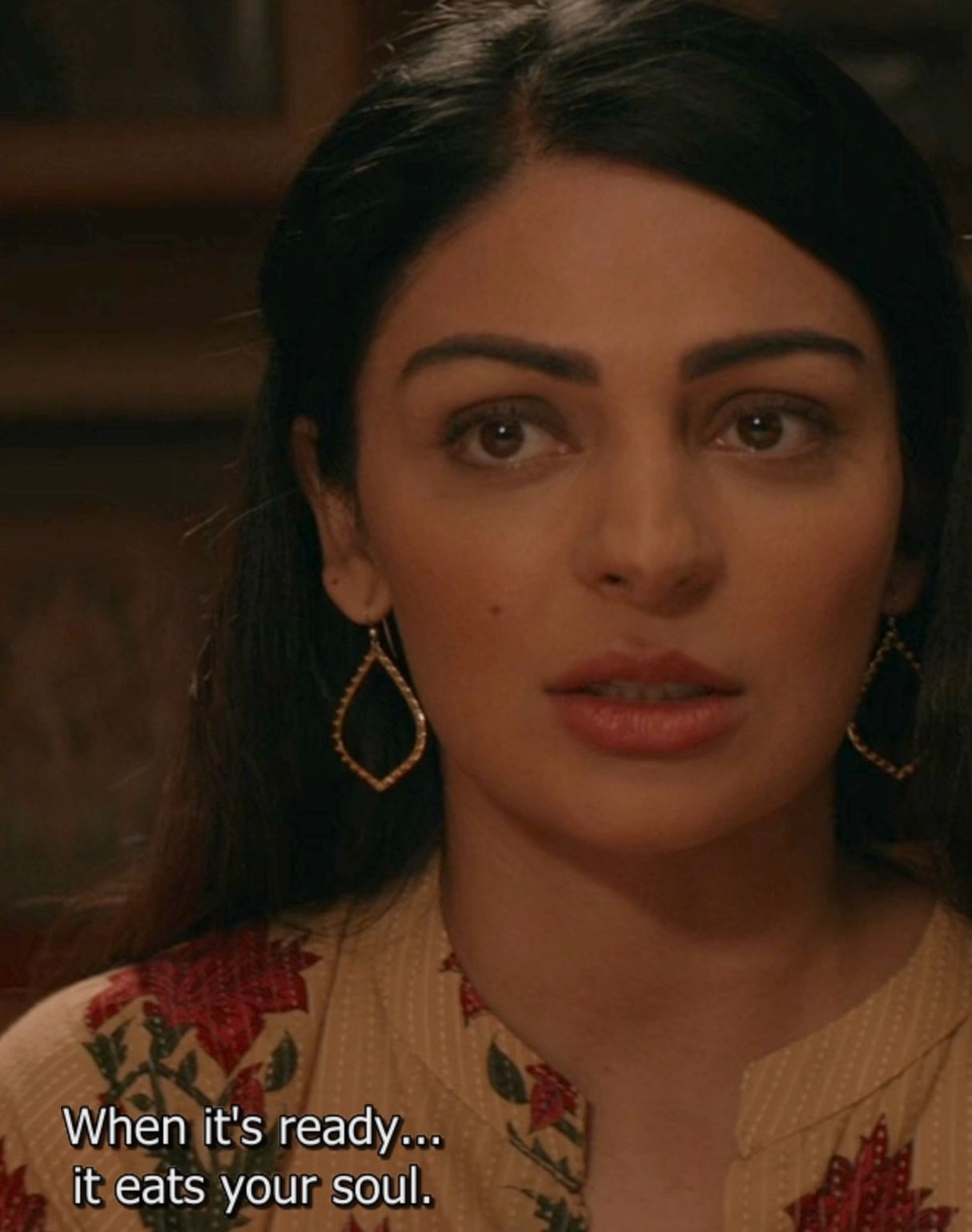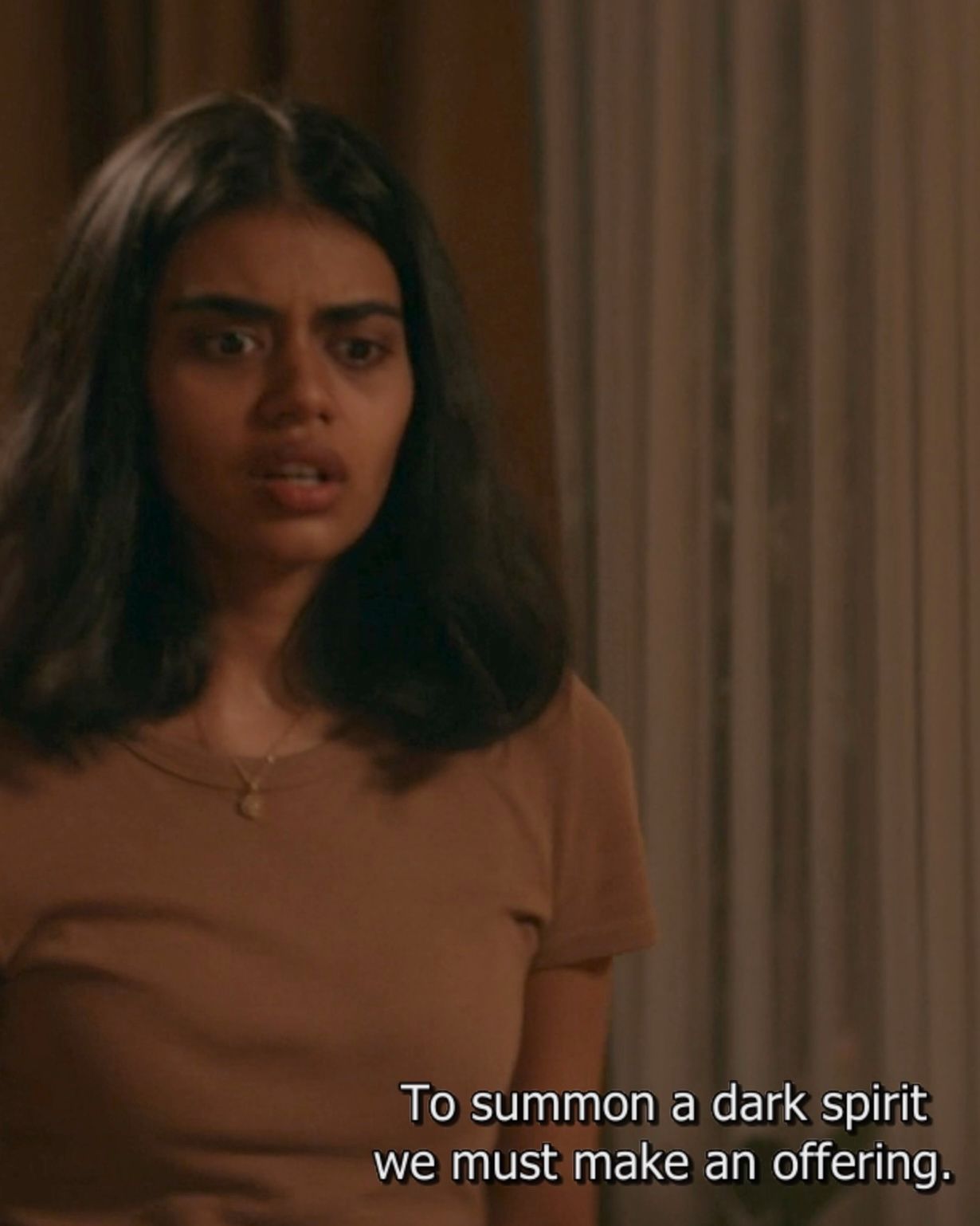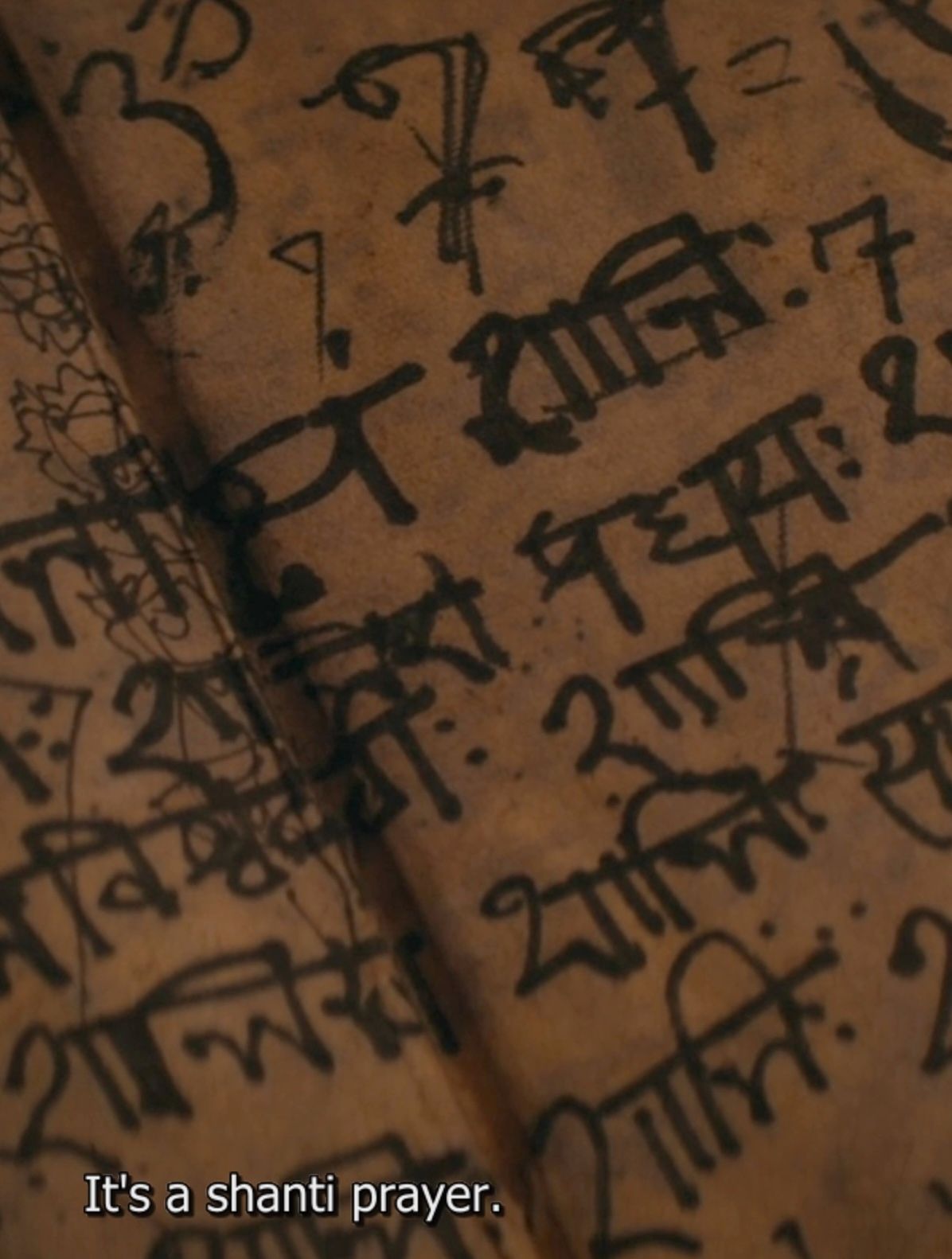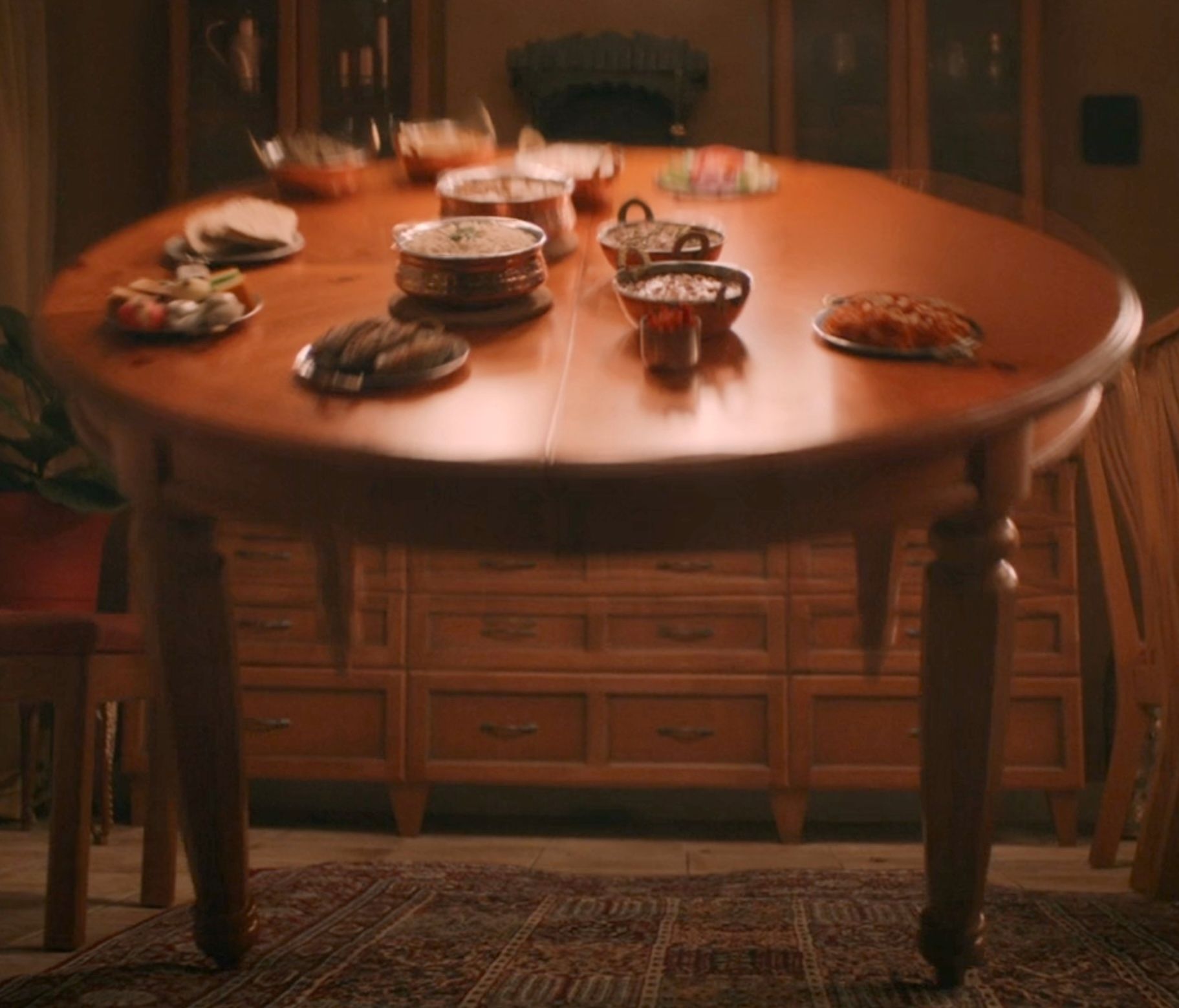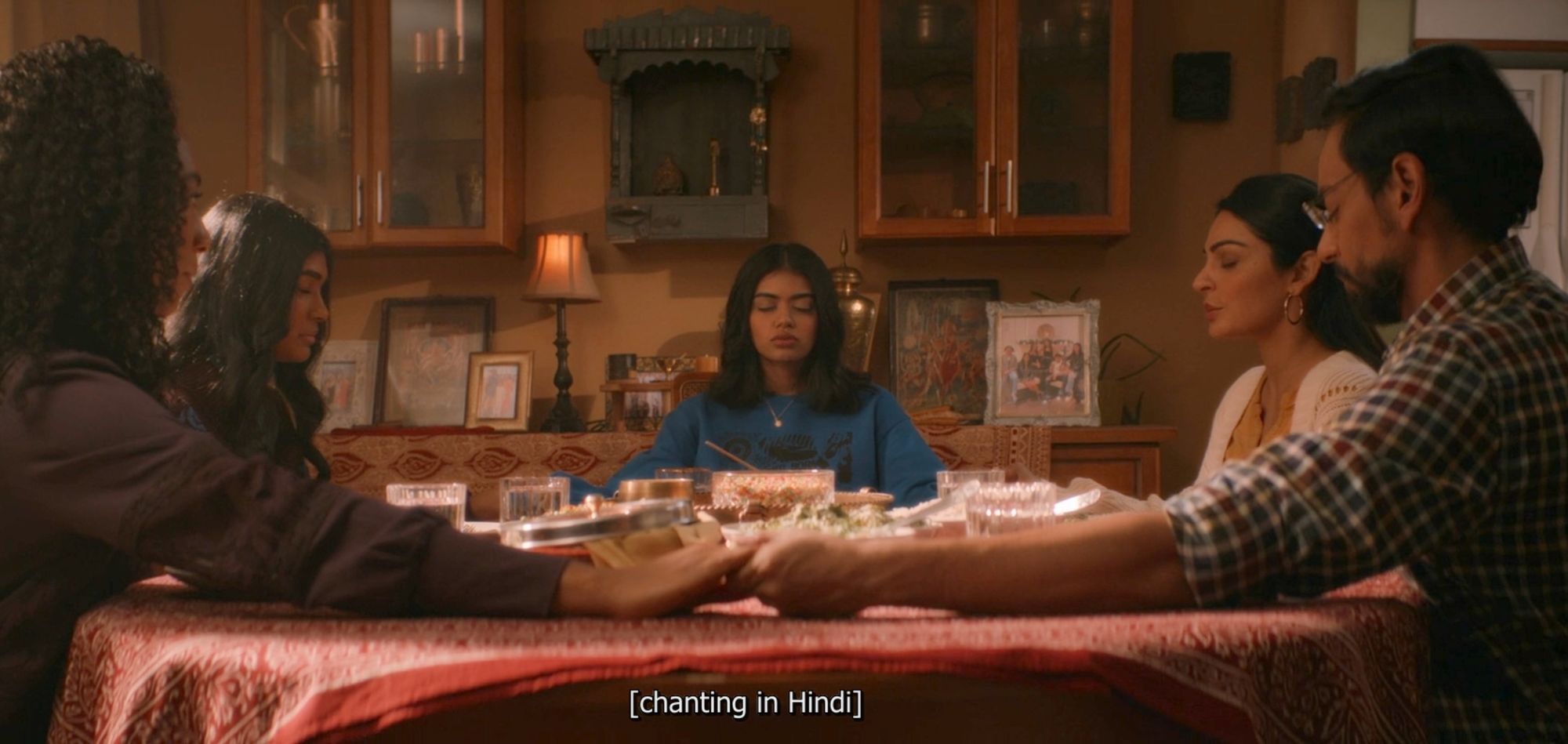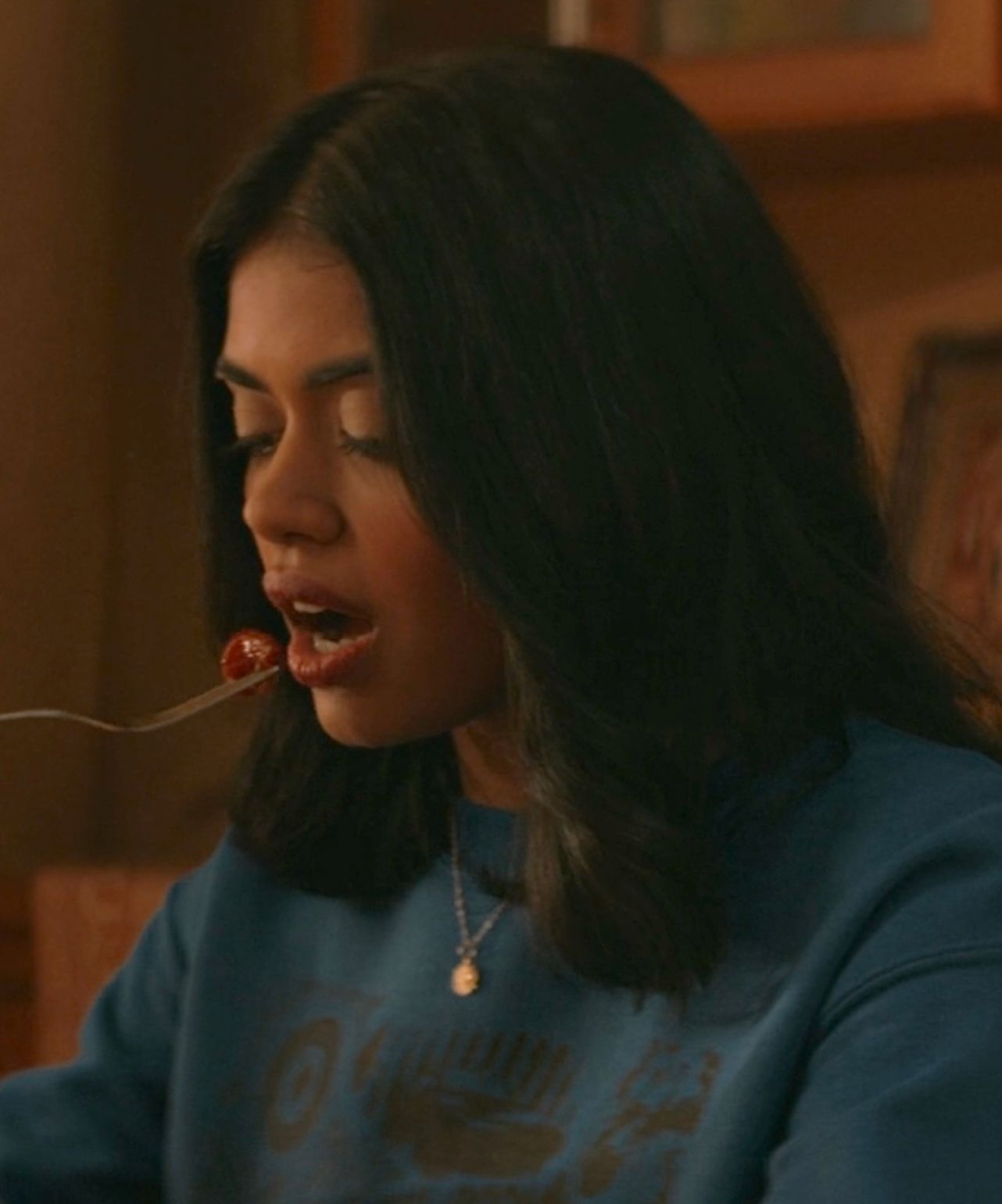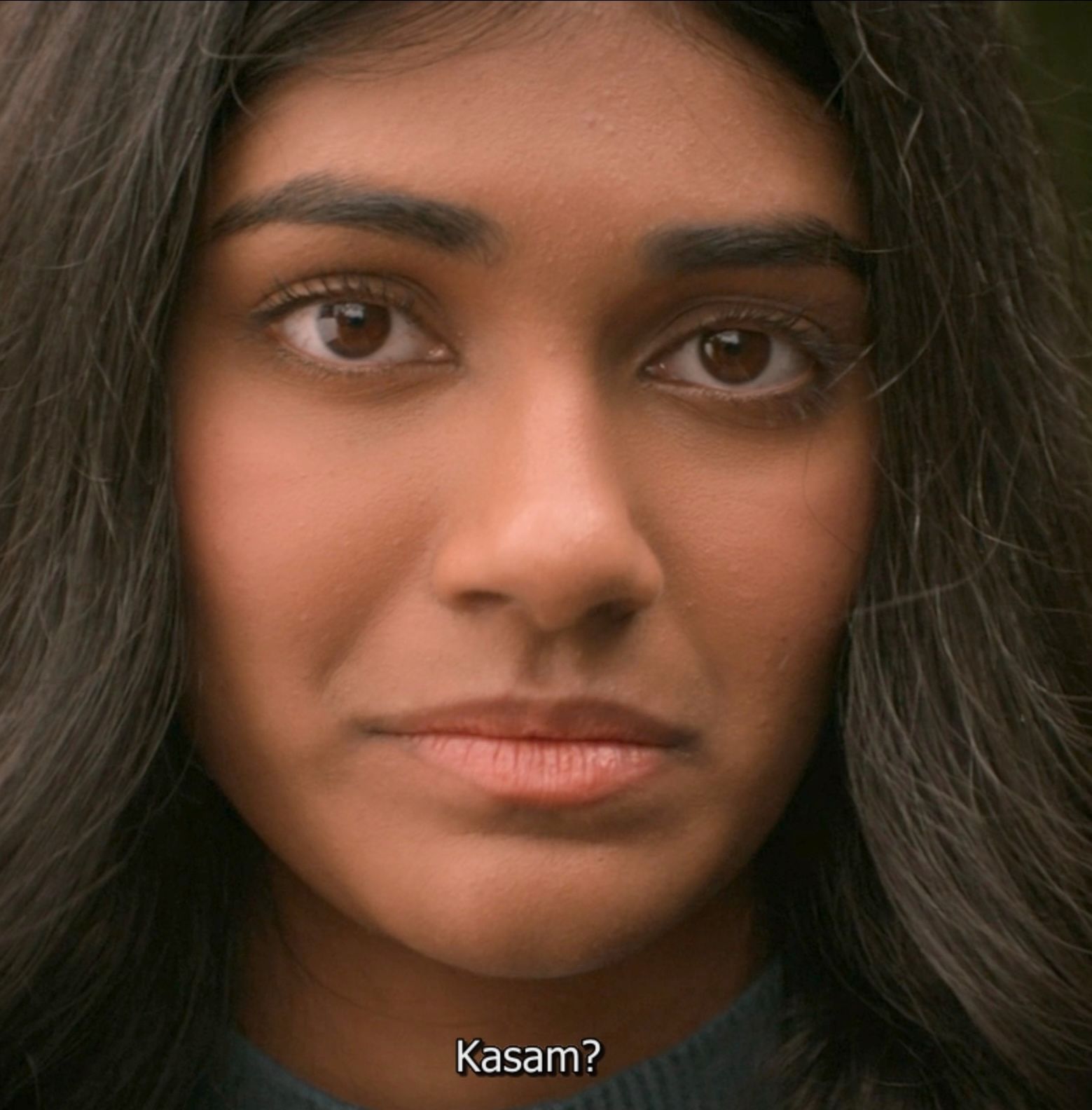I generally enjoyed the well-made It Lives Inside, but: You’re a teen out to see a movie during Halloween season. Do you want to see a rote horror flick with a slight cultural twist, or do you want a fresh auteur to really go ham on a novel premise?
It Lives Inside is Puritan in the American horror fashion (kid with doobie is a goner), but falls prey to the same thing it accuses its heroine of: pointlessly wanting to whitewash itself and fit into a samey genre.
To be clear, I’m not saying it should be more Indian—it’s already culturally reactionary, following that American horror trope. I’m saying importing more of the original folklore is one way the movie could be more novel in the US.
(Horror is Puritan because fear is conservative. If there’s a moment of joy at a party, all those kids are getting chomped. The lizard hind-brain speaks and it wants to be under a nice, safe rock.)
The pishach monster from Indian folklore manifests as a very American horror template, from the art style in a previous victim’s notebook to the creature design.
Of course, these monsters never make evolutionary sense as actual predators. Why is this invisible, over-powered flesh render quietly fasting for Karwa Chauth in some girl’s closet? They only make sense as anxieties monetized by jump scares.
The most universal monster anxieties are echoes of our prehistory past, when lions, bears and sabertooths actually did prey on humans. Before our Chinese cousins invented gunpowder, before we wiped out the California state beast.
To maximize ticket sales, it might make sense to reflect the anxieties of the American target audience. But why not ride on xenophobia in addition to fear of predation? Why not a wicked-looking golem from Indian folklore?
This flick’s concept of soul-eating and possession are Christian, not Hindu; the monster design is from the Spirit Halloween remainder bin, and it laughs like the Predator. The title track, “Teeth” by Mallrat, is sleek and Western. Only the faint outline of the folklore remains, nearly invisible like the monster itself.
It’s shabby treatment for a monster that’s a metaphor for Indianness. Samidha, facing a demon from the old country that can live inside its victims: “Everything I wanted outside of me is inside”
The movie should’ve gone harder on “the monster feasts on immigrant angst” since its PG-13 horror stuff is rote. So much stuff to unpack there.
Count Abdulla explored its brown × genre (horror-comedy) premise better. What Lives Inside is apparently artistic self-doubt.
In more detail
Conceptual problems aside, the movie was fun and slick, keeping in mind that I watch everything at 1.7× speed.
The monster discriminates, savaging others but only eating desis made tasty by our incredible food. Transmits itself between desi kids like a brown The Ring.
The real monster is Samidha after her high-school whitewashing, her words cut deeper than fangs.
Brown and black characters don’t die first 👍🏽
All the non-desi characters call the monster a “pishaash.” French-inflected mispronunciation undefeated.
Bengali director, Punjabi and Tamil leads: all flattened to generic N. Indian Hindu, mirroring the flattening of the monster lore to generic Christian American. But the deity is Durga, who’s more Bengali than U.P.—?
These horror-movie tropes depend on parents and kids not talking. Indian-Ams talk about the major stuff, big crises, and a desi kid wouldn’t run off after a demon alone.
Dad Vik Sahay’s Hindi is atrocious, not realistic.
